If you would like a printed copy of any of our back issues, then they can be purchased on Farm Marketplace. You can also download the PDFs or read online from links below.
-
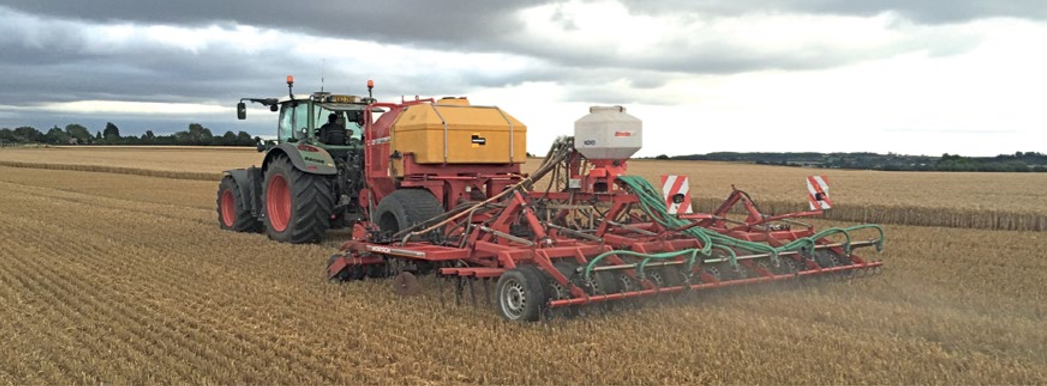
How To Start Drilling For £8K
Clive Bailye’s seed drill of choice is his 6m John Deere 750A , which has been used exclusively for 3-4 seasons. Last year, with an increased acreage, the founder and publisher of this Direct Driller magazine thought a second seed drill was necessary. Having just the one machine was a risk and in a difficult season would mean drilling was delayed. He looked around and found a good condition Horsch CO6 tine drill advertised in Germany.
Words and pictures by Mike Donovan
After delivery he rebuilt the coulters to a narrow profile so as to reduce soil disturbance. He says the tine drill is very useful driling after straw crops such as osr and also through the straw on second crop cereals.
Buying the drill from a German farmer was not particularly complicated, and provided him with a higher spec machine than Horsh sell in the UK. The seed dart tyres are much wider, and the machine is fitted with blockage monitors as well as full width front packers and also a liquid fert application system.
A sheaf of photos were taken, and Clive then asked for some of specific parts to show wear. The deal was done at under £5,000 which Clive says is the market value of these machines which are too large for small farmers to buy. Original owners like to buy new and sell when the machine is still in good condition.
Narrow tines with wear tiles
@Clive knew he wanted to make changes, substituting the Horsch tines and coulters for something far narrower, and has ended up getting his own design of tine made, which has a wear tile made from Ferobide, far harder than tungsten. The drill is on the farm primarily for osr and 2nd crop cereals drilled into chopped straw and the 25cm spacing is okay for these crops.
Comments on Clive’s on-line forum, TFF, said the drill many not be so good with beans, as the slot is a mere 12mm wide. And in barley the spacing may well be too wide as it needs to be thick. Clive points out that the seed pipe can actually be a bit wider than 12mm as it is in the shadow of the point. It would be good to have the option of using it for beans.

Above left: The cheap CO6 is being calibrated ready for its first outing

Above right: The adapted Horsch is being filled by the home built drill logistics trailer with seed and liquid starter fert.
Getting around the German instructions
The Horsch came, of course, with a control box and instructions in German. More on-line discussion revealed that English instructions were available on the Horsch website, and another explained that Horsch was sourcing some of these parts from Agton in Canada anyway. Zealman from New Zealand explained that the button marked with callipers should be held down for around 5 seconds. The menu is where you adjust the tramline sequence, valve layout and row numbers.
Ball hitch is a continental standard and provides a positive connection between tractor and drill

The Stocks Wizard has a rotor modified for Avadex which otherwise leaks everywhere
A Stocks Wizard is on the back of the drill and used for Avadex. Here again the knowledge of actual farmers is helpful. Alistair Nelson warned that the rotor and the surrounding shroud need to be changed, and he got good advice “from Rick at Stocks”. Clive has the same setup on the 750A and says that the Avadex leaks everywhere unless the modification is made. The drill was acquired and modified in 2016 and the results have been excellent.
The machine went through the residue without many problems and having the second drill has meant more timely planting. Clive has shown that moving into No-Till is not the expensive exercise so many farmers think it might be. The total cost, after modifications which included replacing all tines and coulters, was under £8,000.
Author Mike Donovan writes: we have featured a number of home made direct drills in @Practical Farm Ideas, and are always interested in seeing more. Please contact mike editor@farmideas.co.uk or 07778877514.
-
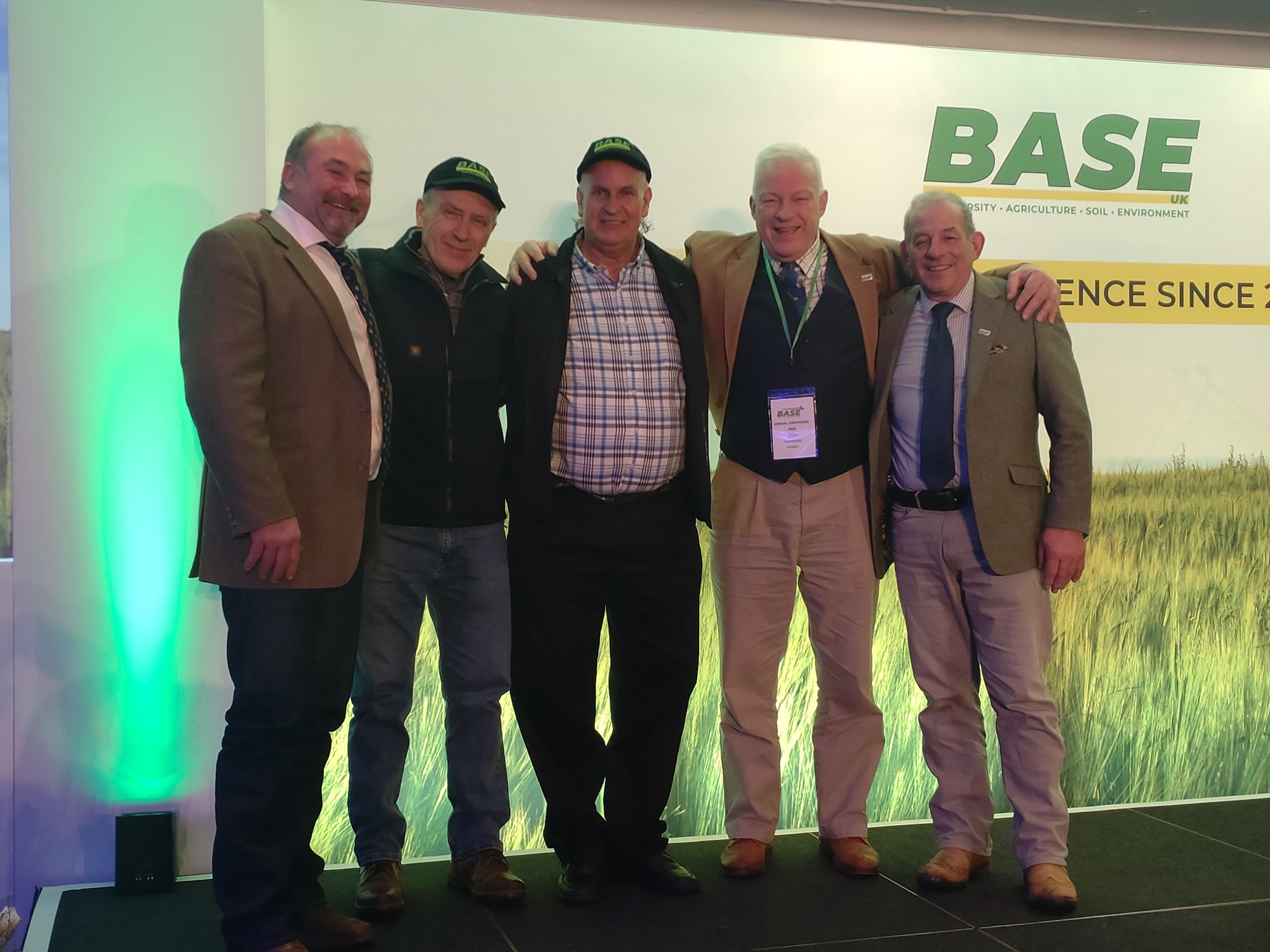
BASE-UK – Conference 2024 – Learning from Experience!
International expertise, as well as UK-based knowledge and practical experience, was on the agenda at this year’s BASE-UK conference, which took place in Nottingham in early February. A wide variety of topics were covered over the two days, from soil health, cover cropping and intercropping, to integrating livestock and the nutrient density of our food.
There was also an insight into Landscape Enterprise Networks (LENS) – a network of commercial organisations seeking outcomes from the farmed environment in return for payment for the implementation of agreed practices.
The conference kicked off with Dr Ademir Calegari from Brazil, who shared his 47 years of experience with cover crops with great energy and enthusiasm. He emphasised the importance of cover cropping in a sustainable farming system, with its contribution to soil carbon from root exudates, soil surface cover, soil aggregation, soil stability and water handling/storage.
While much of his work has taken place in South America, in crops such as coffee, sugar cane and soya, Ademir applied the principles of feeding the soil to feed the crop more widely.
The messages for BASE-UK members were to find the right cover crop solutions for their particular farm problems or constraints, to make best use of multi-species cover crop mixes to bioactivate the soil and to exploit the nutrient cycling benefits that cover crops provide. “If you get this right, the soil will feed the crop. And if you add livestock to the system, the results are almost unbelievable,” he said.
The first day also saw David Purdy give an update on the work done at Project Lamport, where heavy high magnesium soils present their own challenges and a long-term approach to building resilience into the system has been taken.
He was followed by first generation organic farmer Alex Fraser, who combines running a new farming business with his work as an A&E doctor in Yorkshire. He outlined progress to date and was honest about the challenges he has encountered as a new entrant.
The last two speakers were farmer members, Toby Simpson, and Ben Adams. Toby reported on the findings from his Nuffield scholarship on catch and cover cropping opportunities while Ben gave an update on his three-year intercropping trial.
The second day began with soil health guru, Jay Fuhrer (see panel), who’s reputation precedes him. His presentation on moving the carbon dial was very well received by members.
Next up was Northamptonshire farmer David Goodwin, who spoke about how he had integrated livestock into an established arable business, outlining the barriers as well as the benefits.
Richard Jenner of Openfield then gave an update on LENS, explaining that it is just one of a suite of natural capital income streams for farmers. “Every farming business is different and there is no right or wrong model,” he stressed. “Farmers have the option to do nothing when it comes to natural capital opportunities, or they can implement the SFI, trade carbon, get rewarded for insetting carbon reductions in the supply chain or provide ecosystem services to a network, such as LENS.” Most will opt for a hybrid approach, he predicted.
The last speaker was Dr Hannah Fraser, a Nuffield scholar and wife of Alex. Hannah updated the conference on her findings on the role of farming in providing nutrient dense food, emphasising that the way we farm impacts nutritional quality. Against a backdrop of declining life expectancy in the UK, Hannah’s message was that a healthy soil is the starting point for better foodstuffs.
Panel – Jay Fuhrer
Soil carbon levels can be moved in the right direction by applying a set of five soil health principles, US-based international soils expert Jay Fuhrer told the conference on the second morning.
Putting carbon back into soil helps with its ability to cope with future climate challenges by improving its resilience, he said, giving it a more stable structure and helping with water retention and infiltration, as well as making it less prone to erosion, increasing biological activity and improving its nutrient supply characteristics. “That’s why farmers who increase soil organic carbon have better soil health.”
Old Sunshine
Jay pointed out that soil organic matter was built long ago when there was abundant plant diversity with numerous species and large populations of herbivores. Having many species growing meant that the soils used to get root exudates from a diversity of plants, which fed the soil microbes and resulted in soil aggregates being built.
In contrast, today’s cropping systems based on monocultures can’t build soils in the same way, as the soil biology receives exudates from just one annual plant at a time, he added. “Soil carbon has been lost by agricultural systems which took this species complexity away in the drive to become more efficient. Carbon leaves the field in the grain, so unless you are taking action to slow these losses and put carbon back into the ground, you are going to keep on degrading your soils,” he warned.
New Sunshine
Jay said that farmers can use new sunshine to drive biological carbon capture, by harnessing plant diversity and using animals to do some of the decomposition or recycling required. Carbon enters the soil as living, dead and decaying material, and the nature of soil carbon means that farmers need to appreciate the role played by plants and the importance of cover crops, he adds.
“The exudates they give off are consumed by soil microbes, which build aggregates and make the glue that helps to limit soil erosion and get water and oxygen into the soil.”
Put into a system, they mimic the scenarios from years ago, eventually helping to restore landscapes and build back what’s been lost. He likened the process to accelerating biological time – as it shortens the window in which change can take place. “Multi-species cover crops make something happen in a shorter time period than if there had been monocultures there.”
Five Soil Health Principles
Jay Fuhrer emphasised that these are principles, not practices, which can be used in a systems approach.
- Provide Soil Armour/Cover
- Minimise Soil Disturbance
- Include Plant Diversity
- Maintain Living Roots/Plants
- Integrate Livestock


-

Sustainable Dairy: The Key Role of Soil Carbon
Dairy farmers and the wider supply chain are under huge pressure to reduce their emissions and reach net zero targets.
But carbon accounting tools only capture half of the picture if they solely focus on emissions – and farmers have a hidden ally under their feet which is already delivering incredible benefits.
When you add soil carbon into the equation, farmers become part of the solution – not the problem. And some simple land management changes can yield significant benefits, including improved productivity and biodiversity, soil health, and carbon sequestration.
“There is a big opportunity directly under our feet,” says Dr Harry Kamilaris, senior business development consultant at Agricarbon.
“Farmers can go from reducing emissions to actually removing CO2 from the atmosphere. Soil has the potential to sequester billions of tonnes of CO2.”
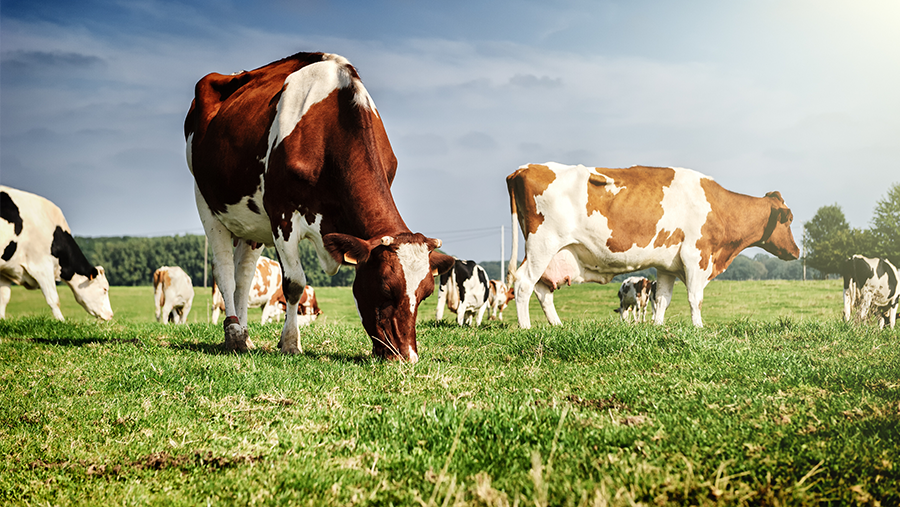
Soil health plays an important role in food security – it enhances productivity and improves water and nutrient holding capacity, thus improving potential grass growth, he adds.
However, for the dairy supply chain to tap into the benefits of soil carbon, it’s vital to have an accurate and cost-effective way to measure what’s already there on which to build.
“There are two parts to this solution – understanding carbon stocks, and improving them,” says Dr Kamilaris. “What gets measured, gets managed, and we need robust and auditable data.”
Agricarbon has developed a robust system of soil sampling, analysis and reporting, which enables producers to measure and monitor their soil carbon stocks with incredible accuracy.
“We need to make it easier for farm businesses to report the good work they’re doing to meet net zero,” he explains. “It’s about the strength and quality of data – being able to prove what you’re doing.”
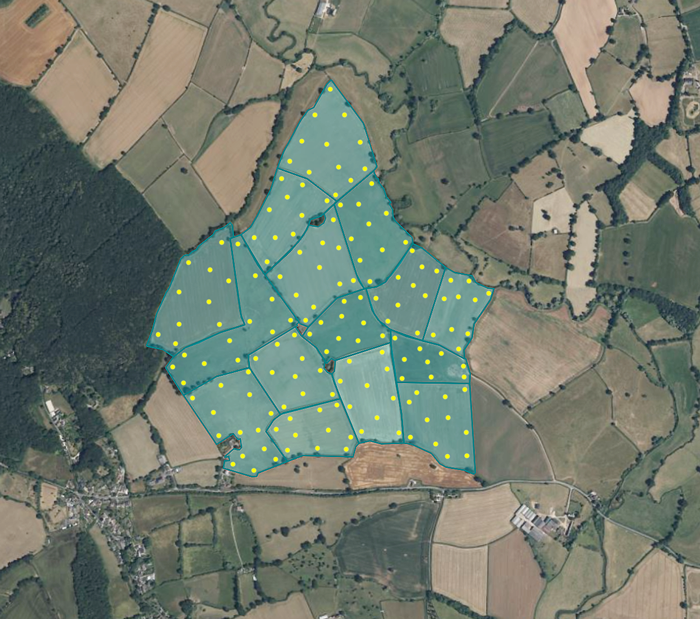
Farm-scale Sampling Strategy Work in Northern Ireland on the ARC Zero project used Agricarbon to baseline seven farms’ emissions and carbon stocks and found that some farms were already sequestering more than they were emitting.
“Farmers are custodians of much of the nation’s carbon, and that’s not recognised by customers, consumers, and others. It’s a key message that we need to get out,” says Delyth Lewis-Jones, head of environment at the AHDB.
One difficulty is the way that governments report against agreed international greenhouse gas reduction targets; farm emissions fall under agriculture, but the carbon sequestration in soils and trees falls under the ‘land use’ umbrella.
“This means that farming is often not recognised for its positive impacts,” says Ms Lewis-Jones. “Farmers are being asked to deliver multiple public goods on behalf of the nation – and soil carbon is a win-win for both profitability and efficiency.”
Some 80% of UK dairy farmers now know their carbon footprint, and the next steps are to reduce emissions and assess their sequestration and carbon storage, says Emma Gregson, environment manager at Dairy UK.
“Processors want to support their farms and are extremely engaged with the Dairy Roadmap (under which the whole supply chain has committed to reach net zero by 2050).

Agricarbon’s Dr. Harry Kamilaris “Our role is to support the industry and show to government and the public that it’s going in the right direction.”
To find out more about how we can help your sustainable dairy strategy by measuring soil carbon, visit www.agricarbon.co.uk or alternatively, please email Agricarbon’s Dr. Harry Kamilaris (hkamilaris@agricarbon.co.uk)
About Agricarbon:
Agricarbon accurately and robustly measures soil carbon stocks at scale. The company provides cost-effective audits, based on direct sampling and automated analysis, which underpins carbon-buyer confidence in soil carbon sequestration.

-

Farmer Focus – Billy Lewis
March 2024
The good, the bad and the downright ugly is the only way I can describe the state of our autumn drilled crops as we head into the spring. Throughout the later stages of 2023 as a result of the unrelenting rain I was pitifully watching our area of cereals for next harvest diminishing by the day.
The rain didn’t cease. In the time period between October and February we received 621mm of rainfall, an astronomical amount considering the average for this period over the previous ten years is 346mm. However, the winter went on and thankfully something did muster the strength to grow. At a conservative estimate I would say 80% of our wheat has pulled through and is now, on the most part looking quite well. It’s very encouraging to see our direct drilled crops on the whole faring quite well in the face of uncompromising weather conditions. However, we can’t have it all and the thorn in my side currently is the two fields of direct drilled oats, adjacent to the main road that have completely failed. This is sure to keep the passing combi drill enthusiasts happy for the time being.
Harvest 2023 was one that I would happily not repeat. Wet grain, wet straw and wet ground conditions. You might be sensing a recuring theme here. Aside from the moisture there were wins to be taken.
The wheat variety of choice was primarily Extase with some areas down to a three-way blend of Extase, Costello & Graham. There was no real yield difference between the areas. There was however a markable difference in disease levels in the crop. Contrary to conventional wisdom the straight Extase was a lot cleaner than the areas planted with the mix of the three varieties. I think perhaps the contents of my blend could do with a bit of refining. The average farm yield came in at 8.29t/ha. No records broken here. However, that’s not what I’m going for. Fungicide use was kept to a minimum; some fields not receiving anything, some just a T2 and others a T1 &T2. N rates were kept down, ranging from 70kg N/ha to 115kg N/ha, and everything was direct drilled either with a Weaving Sabre Tine or John Deere 750A with the exception of one field that needed a reset with a sumo and combi drill. The cost of production for 2022/23, all in, was £139/ton. I have now sold everything (bar 20tons that I forgot about, still in central storage) for an average price of £197/ton ex farm, leaving plenty of meat on the bone. Whether this will be the case for the 2023/24 season? I am really not sure.
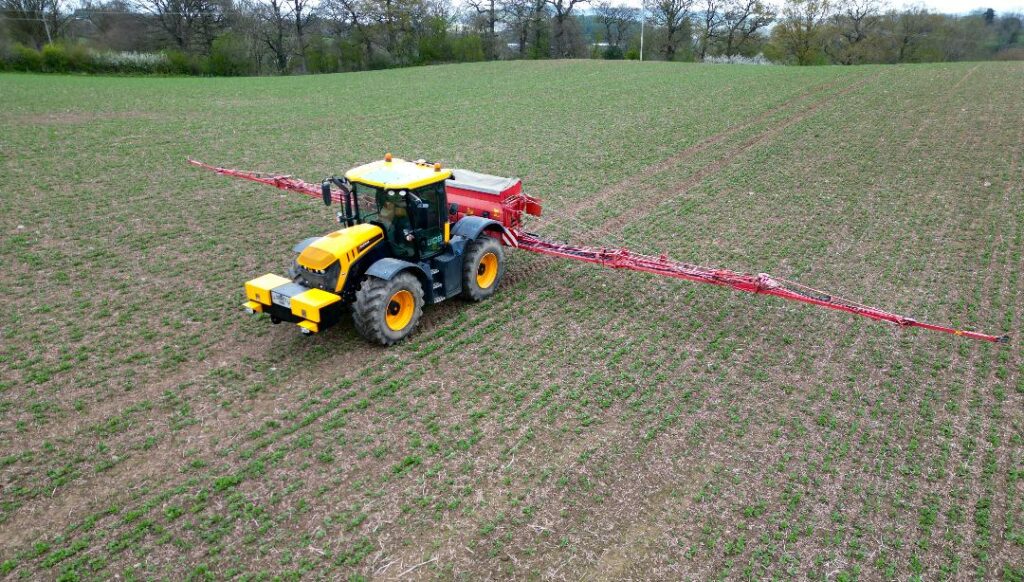
Broadcasting Clover/Trefoil with Kuhn Aero I was satisfied with the spring beans. Drilled in the last week of February, delivering a yield of 3.81t/ha and thanks to a spell of balmy weather in September we managed to cut them dry. It’s a good job that it was dry as the clover and trefoil mix that was under sown in the beans had done rather well by the time harvest came around. In the areas it wasn’t stunted by drought it had ended up level with or higher than the lowest bean pods which displeased my combining contractor. The clover/trefoil was broadcast into the bean crop using a Kuhn Aero in the last week of April. A reasonable amount has persisted into the following wheat crop and the ground walks absolutely beautifully because of it. However, due to the previously mentioned harvesting complications it’s an experiment I probably won’t try again.
Our area of Mascani winter oats did well, yielding 7.49t/ha. Didn’t have a sprayer through it over the growing season and received just 65kg N/ha. There was a lot of straw, all of which got absolutely soaked the day after it was cut and required turning two or three times, which was fun.

Direct drilled Extase The Tardis winter barley was a complete waste of time. Having never grown any barley in my farming career I decided to put a few fields in. This went in place of where we would normally grow a second wheat in the rotation. It yielded 7.64t/ha, cost about the same amount to grow as a wheat crop, we cut it all at 18% and it was sold for a considerable amount less than the wheat. Never again.
Despite the aforesaid pitfalls of farming in the wet old west, there are a few benefits. Our cover crops once again absolutely flew out the ground with no shortage of soil moisture to get them going nicely. The eight-way mix of Mustard, Kale, Phacelia, Forage Rape, Linseed, Vetch, Sunflowers & Fenugreek has kept our biomass reduction team AKA replacement ewe lambs well fed over the winter. I make sure to graze the cover crops in a very similar manner to how I graze our grassland. Graze a third, trample a third, leave a third behind. That way the lambs are always being kept full but never wading around in mud, making a mess of the field. The proportion of the cover crop that is trampled into the ground helps protect the soil from heavy rain which has proven to be very important this winter. The more conventionally minded onlookers probably titter about how much of the crop I am ‘wasting’. The lambs have finished grazing the cover crops now and if we could manage just a week without rain, I might be able to get the wheels in motion establishing some spring beans. This I know is wishful thinking.

Cover Crop At the time of writing this piece (1st March) my attention is turning towards lambing, calving, the beginning of the grazing season and all the work that comes with it. I think 2024 could be the year for Horn rather than Corn. The beef and lamb trade are absolutely flying at the moment, making the current value of cereal commodities look rather pathetic. I’m hoping for an early turn out this spring so that we can carry some straw over to next winter. Due to the failed oats and areas of dodgy wheat we’re at risk of being in a straw deficit. As well as an early turn out it would also be good if we could receive nice steady rainfall at regular intervals throughout the summer. It would be lovely to have some decent growing conditions, meaning I could drop a few fields out of the rotation to stockpile grass for the cows to come back to in November/December time, extending the grazing season. Anyway, I’m tempting fate now, the nice steady rain is probably a pipe dream as I expect once the current deluge ends we’ll immediately be thrust into months of extreme drought!
I wish all the readers good luck with the coming growing season. I think it’s acceptable to say that we’re all starting it on the back foot this year due to an assortment of reasons. As I look out the window beside me it is currently snowing, so here’s hoping for little bit of sunshine soon to make our lives just that bit easier!
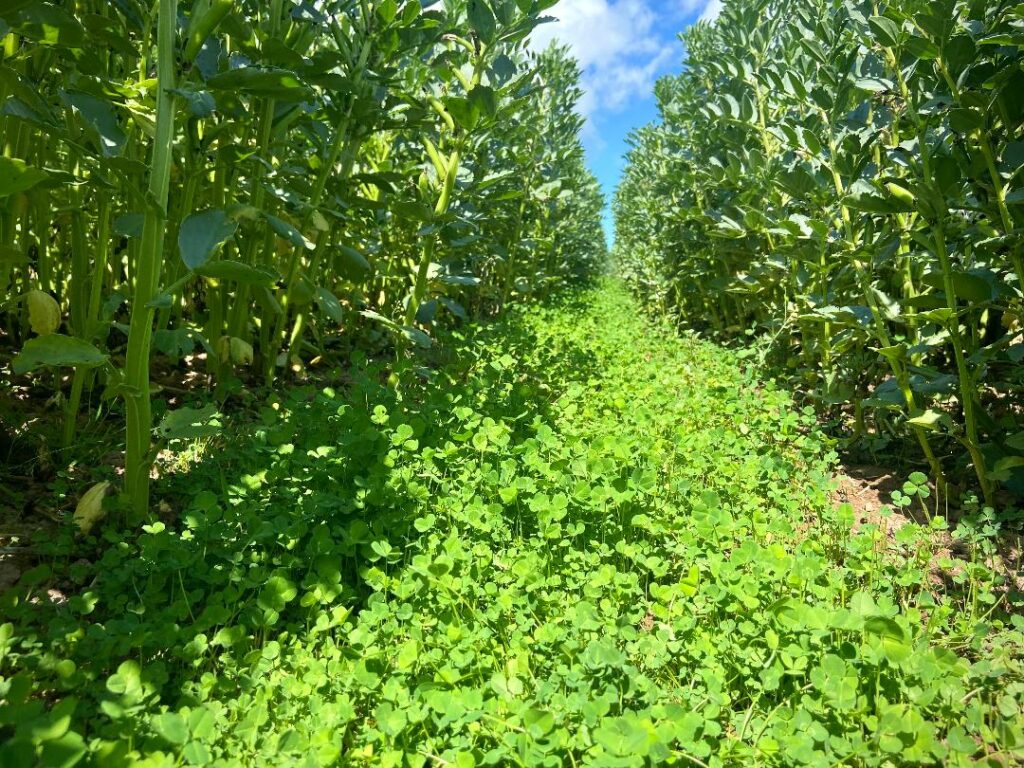
Clover/Trefoil Mix Under sown in Beans 

-
Farming’s fungi focus: Considering belowground to benefit aboveground
Dr David Cutress: IBERS, Aberystwyth University.
• Symbiotic fungi mycorrhiza have important interactions with many plant species
• Mycorrhiza, in optimal conditions, can improve plant growth with fewer inputs, improve soils and protect from weeds, insects, contamination and climate changes
• Mycorrhiza focused systems as such could act as a promising future tool to combat the increasing economic instability surrounding fertiliser costs in farming
• Optimising future systems should consider practices, and crops, which integrate well with mycorrhiza towards providing more environmentally sustainable productionFungi, plants and soil
Most farming systems, whether they are crops, livestock or of a mixed focus are impacted by the soil health of the surrounding environment. Soil health is vital for the optimum growth of all species of plants including those involved in different pasture systems for direct grazing or silage production. The Knowledge Exchange Hub has previously produced several articles on the importance of soil health and practices which impact this, but one area that hasn’t been fully expanded is how important the interaction is between soil health and soil fungal species.
Soil fungal species which interact with plants are termed mycorrhiza and these are essentially universal across all soils, other than those which are severely degraded. These form relationships with around 80% of all terrestrial plant species. They evolved millions of years ago to interact symbiotically with plant species where they can act to essentially extend the root networks of a plant, enhancing the uptake of micro and macro-nutrients as well as water.
Some species interact inside the plant root tissues themselves and are called arbuscular mycorrhizal fungi (AMF) whilst other species have an external interaction where they surround the roots (more common in woody plants) and are called ectomycorrhiza (EcM). Whilst there are some noted interactions which can be considered detrimental to plants, the general consensus is that the abundance of mycorrhizae species are either neutral or beneficial in their interactions.
Along with these largely beneficial effects on plants, the networks of hyphae (root-like structures of fungi), referred to as mycelia networks, play roles in improving soil health as these structures act to hold soil particles together (reducing erosion) as well as secreting protein-rich substances such as glomalin which can boost the soils organic matter content (SOM) and store nitrogen for up to 40 years. The mechanisms for some of these key beneficial activities are highlighted below along with visual representations.
Nutrient uptake

Root structures of plants are essentially improved and extended due to the symbiotic relationship with AMF/EcM systems as can be seen in the above and all following diagrams where plant roots (in blue) are extended via fungi hyphae structures (in red). This gives the plants access to a wider area from which they can take up nutrients and that the carbon produced by the plant can be distributed out into the soil. Above a widespread mycelial network leads to extra leaf production and biomass in the plant on the right compared to the left.
One key nutrient with which mycorrhiza are associated with improving uptake is phosphorous (P). Whilst this is a complex situation dependent on the specific fungi and plant species, the root structures, and the available resources in the soil (naturally or due to fertiliser addition), generally, mycorrhizal interaction allows much better plant growth rates in P depleted soils and has been noted to play roles in nitrogen (N) uptake too.
Soil health

Soil health benefits due to the extensive root/hyphae structures allow for higher water retention (shown as blue dots) which is essential for plant growth and can boost survival in drought conditions and general stress tolerance. Also, when compared to plants without mycorrhizal relationships far more organic carbon (C) input and sequestration is present (black dots) whilst also better soil aggregation properties are achieved (brown shapes) which can play roles in the reduction of erosion amongst other things.
Importantly these mycorrhizae act as an extremely rapid route for C transfer into the surrounding soils, with estimates that they account for 5 – 10% of the photosynthesised C in plant interactions.
Yield and growth benefits
Improved growth and yield impacts are suggested to be linked with fungal interactions in many situations as represented below. In these instances, the more extensive network of interaction leads to better growth. This can also impact the interactions with pollinating insects as healthier plants will have more energy available to produce more flowers and more nectar and in crops reliant on pollination for production this can be extremely important.
Plant competition and natural weed suppression are other areas where mycorrhizalsymbiosis has roles with studies finding that weed growth could be reduced between 20-66%, essentially acting as a biological control strategy reducing the need for herbicides and ploughing. Mycorrhiza may also play a direct role in increasing food safety as they improve plant tolerance to organic contaminants, heavy metals and agrochemicals and act to concentrate these in the roots (and in some instances reduce their availability in soils) reducing the unsafe build-up in the aboveground human/animal edible components of plants.

Plant defence
Plant defence roles are also noted in literature through mycorrhizal interactions with plants causing the production of different volatile organic compounds (VOCs) to be released. This can be thought of as ‘signals’ to different herbivorous pest species to keep them away or potentially to encourage natural biological pest management, as signals that can encourage insect species that eat herbivorous species which would otherwise eat plant biomass, can also be released.
In the figure below, you can see the movement (via green arrows) of groups of insects impacted by signalling from plants, boosted by mycorrhiza facilitating signal transfer between plants (blue arrows). More specifically EcM hyphae surround plant roots so they can add a layer of protection from pathogens physically and through their action to acidify the surrounding soils. Generally, these symbiotic relationships have also been shown to help plants be more stable to both biotic and abiotic stresses which are increasingly a risk in the changing environment due to climate impacts.

Finally, it is worth noting there is a significant level of complexity of interactions found with mycorrhiza and plant activities. For example, the lack of mycorrhiza can have strong negative impact on the competition between plant species as well as the establishment of seedlings to young plants along with a slightly less negative impact on overall plant diversity. Whilst AMF and EcM species have similar impacts on soils and plant competition they can act opposingly on plant establishment and plant diversity.
Practices that impact mycorrhizae
Many farm and land management strategies will impact mycorrhiza populations as they are integral within ecosystems. A breakdown of actions and impacts towards boosting symbiotic positive relationships are outlined in the following table and explained further in the section that follows.


Nutrient uptake
As noted there are suggested nutrient uptake benefits provided by mycorrhizal fungi, however, these are known to be impacted by the available soil nutrient levels. In situations where high fertiliser levels are applied to soils, this can make the interactions with mycorrhizae less efficient or potentially even negative in some cases. As such, there needs to be more consideration towards planning the levels of fertiliser applied to fields as getting this balance right could provide similar growth benefits to plants with lower quantities (and therefore costs) associated with organic or synthetic fertilisers.
Importantly, however, data suggests a significant amount of time is needed for soil conditions to recover following fertiliser addition and ploughing practices. In a study of farmed sloped areas in China it was found that it took between 12 and 32 years for species richness (of both plants and fungi) and soil carbon and nitrogen levels to equate to those found in natural unmanaged grasslands.
Furthermore, mycorrhiza tend to be obligate symbionts with a degree of host specificity, either to a group of plant species or in some instances singular plant species. As such in historic sites where particular crops have been grown over a long time, particularly monocultures, there may be a lack of available fungal species present (as these have had no hosts), meaning that attempts to change such systems to polyculture will take time for host fungal species to re-establish. This suggests that practices such as those present in organic (provided tillage is reduced) and regenerative farming systems should factor in well with improving mycorrhiza fungi networks and functionality.
Soil health
Practices that affect the structure of the root and hyphae networks are known to play roles in impacting the potential beneficial effects of mycorrhiza species. For example, tillage breaks up the soil and root structures and has been found to reduce the water-stable aggregates within soils as well as having roles in reducing SOM and decreasing the presence and diversity of fungi in soils. As such min and zero tillage strategies along with permanent or rotational perennial systems show considerable benefits in this area along with their suggested roles in climate mitigation strategies.
Yield and growth benefits
In pasture systems, one aspect that has been demonstrated to impact mycorrhizal levels is the level of species diversity present within a given grassland system. The higher the species richness of a grass system the more diverse the mycorrhizal population, and increasing the diversity of mycorrhizae has been linked with significant above-ground increases in biomass production. This has equally been presented from the perspective of crop diversity as well as grassland systems.
Plant defence
Whilst there are no specific examples of practices which act towards boosting the plant defence specific impacts of mycorrhiza, all of the elements discussed will improve fungal networks and health and therefore act to improve the plant defence aspects of mycorrhizal symbiosis.
Future considerations
Due to modern crops being dominated by breeds adapted to give higher growth and yield rates by utilising applied agrochemicals most efficiently, many of these crops (particularly cereals) have shown reduced interactions with mycorrhiza fungi. Looking to the future this may give added reasoning (aside from stress adaptation and nutritional benefits) to consider re-introducing more heritage crop varieties which will likely be less reluctant to form mycorrhizal interactions and perform better in lower input environmental focused farming practices.
Similarly, there is debate surrounding the specific breeding of crops to waste less energy in developing extensive root systems. These plants would work beneficially with soils managed to preserve complex mycelial networks as the smaller roots would be offset by the nutrient gather and retention potential present within these networks. Essentially this could let plants focus more energy on above-ground biomass production.
There appears to be a complex level of interaction between mycorrhiza fungi and pesticides as well as other agrochemicals such as herbicides and insecticides. In some instances, these can be detrimental, neutral or even positive. As such, future research needs to determine how much these compounds factor into any upcoming strategies which might hope to bolster symbiotic fungal benefits. Finally, there are already many commercially available “biofertilizers” inclusive of fungal inoculant species which attempt to boost the fungal biodiversity of soils through their artificial application. We will look to evaluate the function and effectiveness of these in a future article.
Summary
Mycorrhizae symbiosis within pasture and crop plants could play an important role in shifting agriculture towards environmentally-focused farming. Soils with established healthy mycelial networks are more adaptable to changing environments including droughts and floods which are more likely to occur due to climate change impacts. Also, they can play important roles in sequestering C long-term within soils and good maintenance of fungal networks will help to avoid losses of C due to factors such as soil erosion. As such, farming practices and systems should increasingly be considering our understanding of how activities can impact on mycorrhiza, towards improved holistic ecosystem functionality.






-
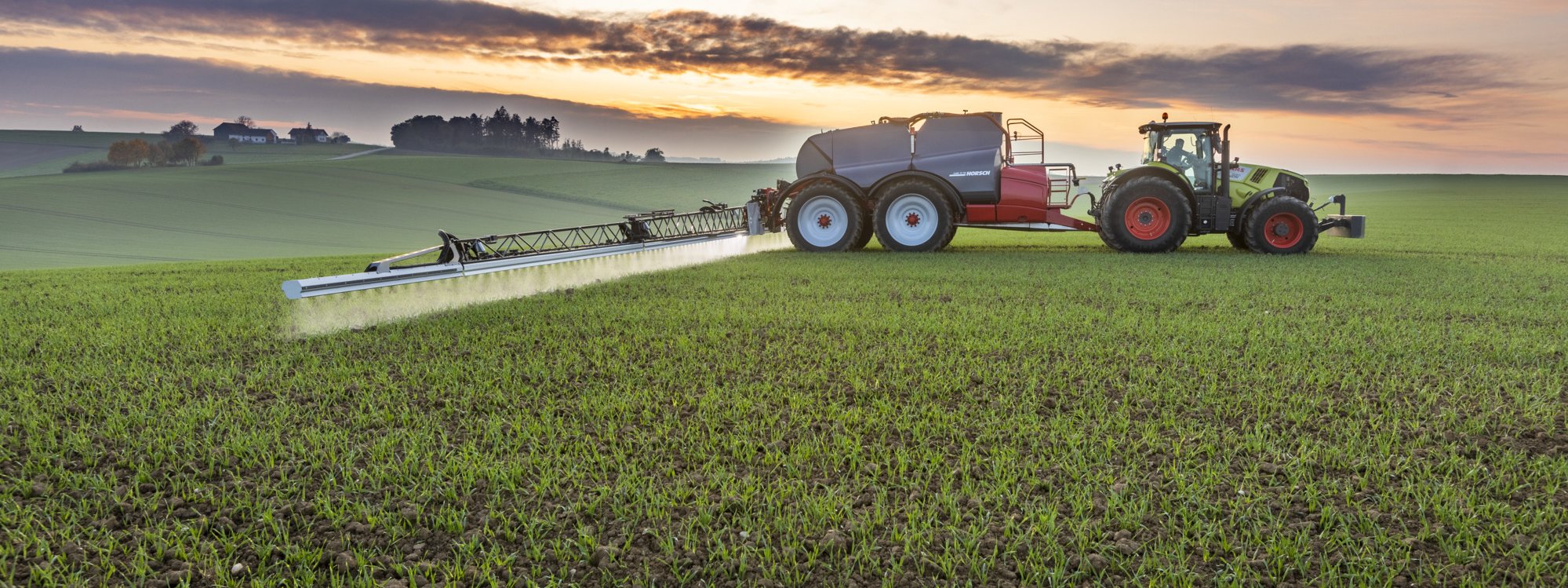
Agriculture has landed at an interesting turning point – where do we go now?
Signs of Spring are everywhere, and while work in the world of agriculture never stops, this month we will see efforts ramp up – from the drilling, or sowing, of the sugar beet to fertilising and crop spraying.
At a local level, we may still only be seeing the seeds of regenerative agriculture taking hold, but as reported in the Financial Times recently, at a global level, the well-coined phrase is now ‘firmly cemented in corporate parlance’ as well as across some of ‘the sustainability plans of big food companies such as Nestlé, Unilever and Danone’.
With leaps being made ‘up there’ in the grander scheme of things, for us on a day-to-day basis it’s been positive to see regenerative agriculture gaining increased interest and traction as growers look to find new ways of reducing inputs while increasing their ROI.
Sea2Soil, for example, with its biostimulant activity as a soil improver, plus added nutrients, will increase microbial activity, root growth root diameter and soil water holding capacity. This leads to increased nutrient availability, higher quality and double-digit yield increases because it stimulates the uptake of fertilisers and nutrients with no negative effects on a range of crops.
The soil improver market has the potential to grow considerably bigger than the current pesticide supply industry, given time.
With all the interests in regenerative agriculture, carbon footprints, reduced fertiliser usage, recent legislation shifts and sustainable farming, is this the time for soil improvers to move forward into mainstream agricultural product usage? We think so.
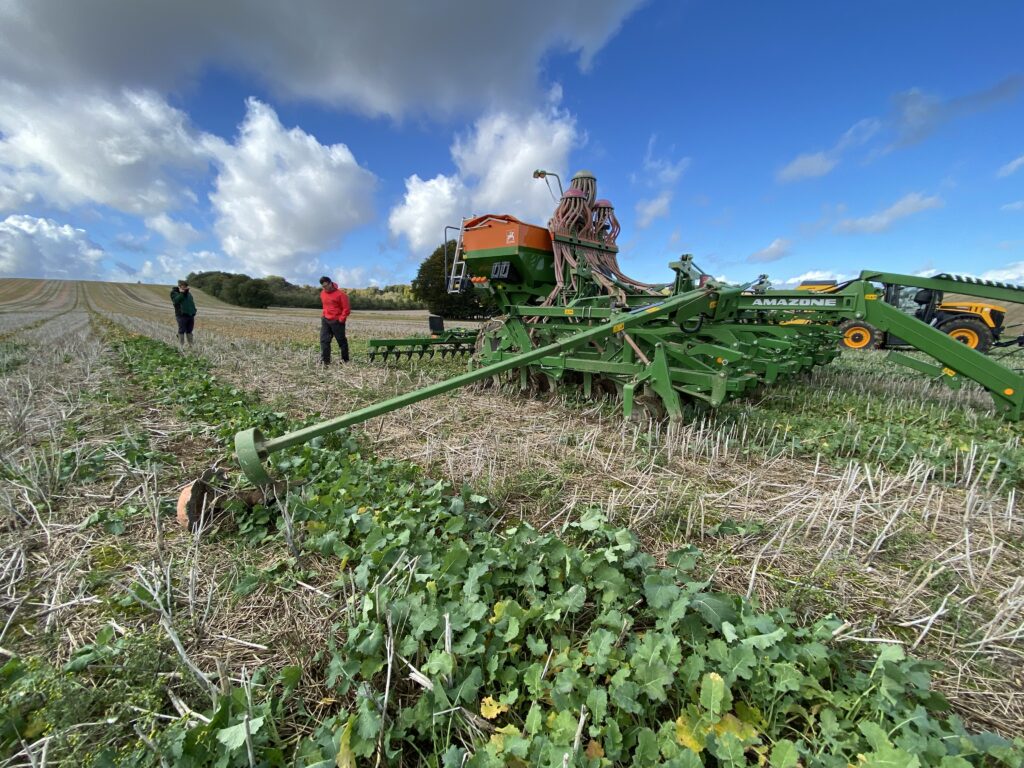
There is a clear trend developing that shows farmers are growing tired of the regenerative market having no clear definition too, with almost anyone technically being able to label themselves ‘regenerative’ under a green-washed label.
Because of this, we’re seeing growers looking to invest in products such as Sea2Soil, where results are being driven by ongoing trials, in turn, providing firm foundations upon which they can then qualify themselves regenerative.
If the 20th century was the era of biochemistry, the 21st could easily be described as the era of biology. As an industry, we are realising that our actions matter; we cannot continue to ignore the health of the soil and our wellbeing.


-
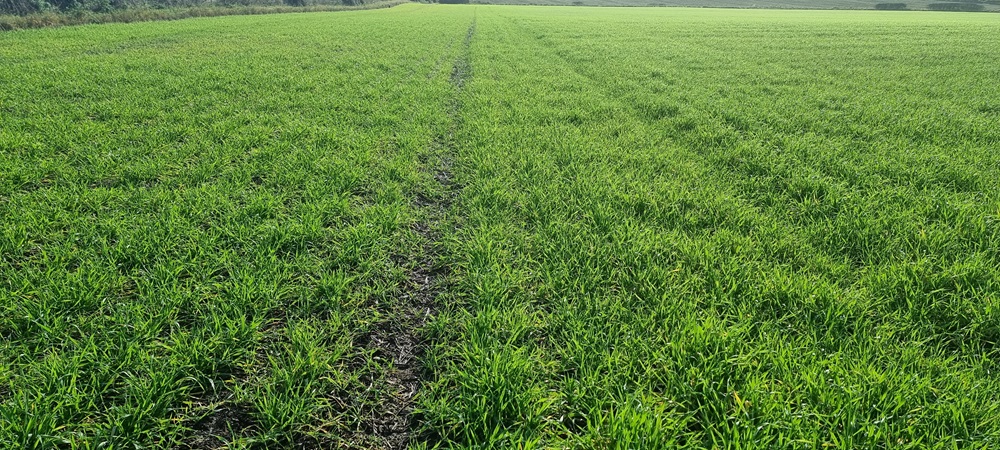
Farmer Focus – Neil White
I’m not going to dwell on the weather but as it is a major factor in what we do, I will say, despite having constant downpours of around 40-50mm we have fared better than most. My rain gauge filled so many times I must admit I gave up emptying it. Colin McGregor, 4 miles away, didn’t give up, and tells me that we had 45% of our annual rainfall in the last 3 months of 2023. We both agreed that once again we have been very fortunate in this area compared to large parts of the country both North and South. The SFI scheme has maybe become more appealing in a year with so many challenges, and stories about 27% of ground already being taken out of production is a big concern. I don’t blame anyone for making that judgment based on the prospects short term. We don’t have that scheme north of the border so its more of the same for us, which means very little opportunity to enter any scheme for me.
Crops in the area, overall, look good. Some late sown crops, ploughed, power harrowed or heavily worked have really struggled and to use a Scottish comparison they look like porridge, with a shimmering top layer. We have the advantage of still being able to sow early in SE Scotland and that has mostly been the difference between good and bad establishment this year. I made a point of going 10 days earlier this year with my Pearl winter barley after wheat. I raked the field and felt I had achieved a chit this year before spraying off and direct sowing. The crop looks good so far and hopefully with the nitrogen it won’t drop any tillers going forward. I sowed cover in mid-august which established well, whereas the mid-September sown cover struggled at every stage and was very disappointing. The later crop was hit with flea beetle, then slugs which didn’t seem to be around when the first cover went in. The OSR established well except for one late field which flooded and some of that crop is gone. I may sow some spring beans into the patch but I’m not sure if they will make it to harvest or not. The other fields had strong crops of Resort OSR coming into the new year but the pigeons have now made their mark eating every leaf on every plant in one field and a part of another, the rest is untouched. I will use this as a grazing trial as the best OSR crop I’ve had came after heavy pigeon grazing and a good spring.
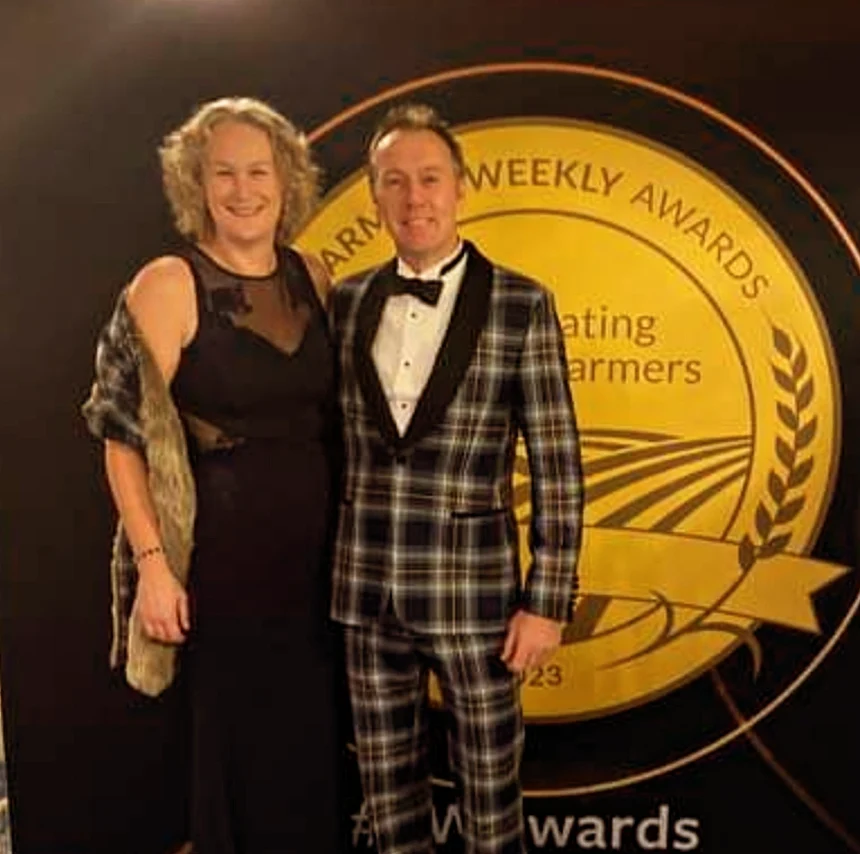
I am doing some trials for Simpsons Malt on my direct sown Diablo spring barley following cover crop. We have soil tested and will tissue test and finally analyse the harvested barley following cover and non-cover establishment to see any differences or benefits between them. The barley after winter grazed cover last year had a similar yield to ones after overwintered stubble but had almost twice the straw. I hope in a more forgiving growing season that would have been yield. I have been walking the desiccated cover crops and noticed, when crumbling the top layer there seems to be a large amount of slug eggs. I will need to keep a close eye on that prior to sowing in case pellets are required.
One problem I have noticed which is new, is high tide marks. I have fields which gather water in low points, one right outside my kitchen window. The water came up a few times but always went away a few days later saving the crop. The only problem is, now that I have more residue in the top layer the extremities of the water are marked with high tide marks which have rotted out the crop. It’s not a big problem I know, but it is a new one.
I used my penetrometer last autumn to decide the depth of the leading leg on the drill and it has been very interesting. Previously I would have made a decision based on soil conditions, and the fact I have plenty horsepower, this led me to run the leg deeper than required, but I didn’t know that until I started testing for compacted layers in my soil. The biodiversity and profitability group I am part of used the meter to check my soils and the absence of compaction was a refreshing discovery. I subsoiled 2Ha of my farm in 2015 and haven’t done any since. I put the lack of compaction down to a combination of many things. Firstly, and most importantly, the improvement in my soils. This has increased carrying capacity and water infiltration, meaning I am causing less problems from the very beginning. During the season I run my 650 tyres until the crop is well developed and run wide row crops after that, and finally I am careful to control the traffic, where possible sticking to tramlines and chopping straw and finally the tracked combine is very light on its feet. All these things have allowed me to travel on my winter crops earlier and give them the nutrition they require. This has been another bonus, spreading the workload.
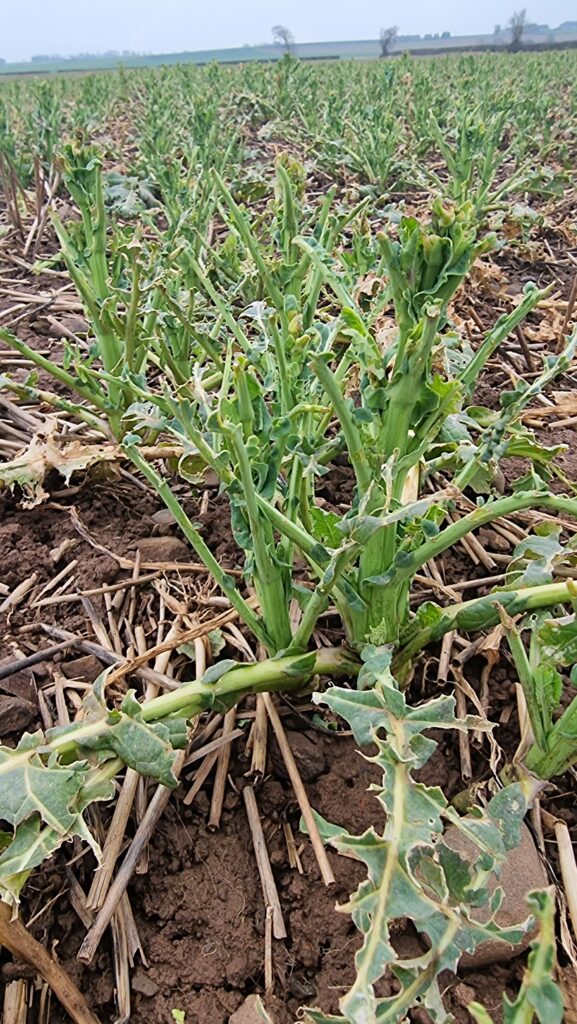

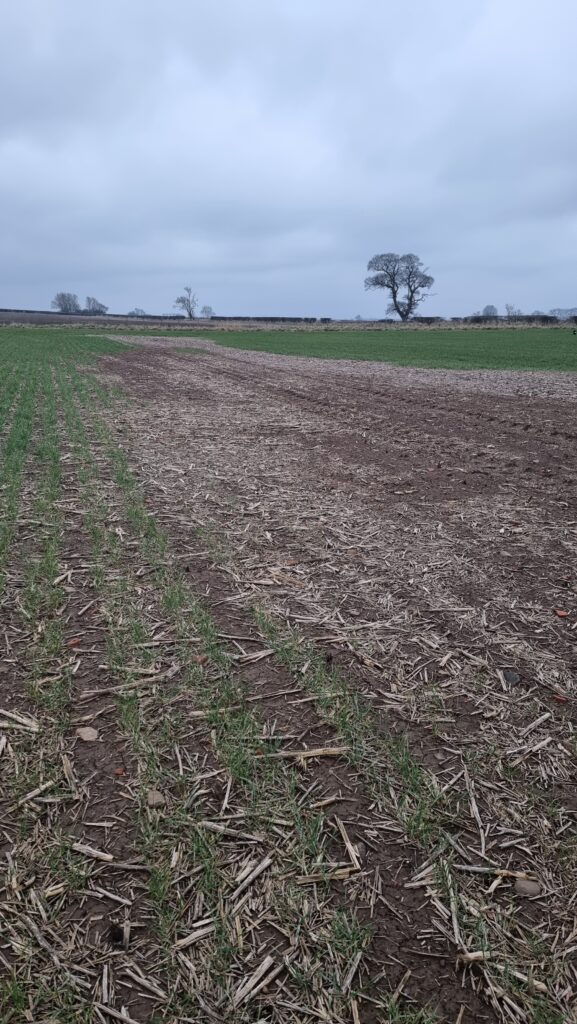
Farmers in the area are putting on muck and some of the conditions have been far from ideal causing visible soil damage. I’m often asked why I don’t use a straw for muck deal in my system and it is for that very reason. I do use some hen muck, early season, onto WB stubbles ahead of OSR and some to go on the high N barley but the rest gets chopped cereal, legume and osr straw to help the OM. Conditions have not dried up enough yet to consider drilling beans or barley so I will just have to wait. The spring beans were sown on March 23rd last year and did well, and it looks like it may be a similar sowing date again this year.
In my last piece in the DD I wrote that I was in the final 3 of the FW arable farmer of the year and we were heading to London for the awards night that week, unbelievably I won! Everyone in the category were using reduced tillage, trying to reduce inputs and increasing their margins, all things discussed at length in this magazine. The whole experience has been very rewarding and has made me look again at my system, and what the changes have brought to my farm and my bank balance. Regarding this year’s competition, I would recommend nominating someone, or entering as it has been a very positive experience for me, I have spoken at many meetings and met lots of very interesting people, and I will be one of the judges this year and would love a look around your farms. Good luck.


-

Drill Manufacturer – Dale Drills
The press wheels keep on turning here at Dale Drills, as we give you the lowdown on our latest product innovations, as well as our eligibility regarding the FETF grant scheme.
Introducing Dale Drills Latest Innovations
To match our Eco range of seed drills, our Mounted Tine Drill (MTD) range has been upgraded to include a split tank option, allowing for simultaneous sowing of two different seeds or products. The narrow double coulters place the two products, one beneath the other, behind the 12mm wide tungsten tipped tines as they penetrate the soil. The 1500-liter hopper, divided evenly, integrates two Accord seed metering units (one of which is a heavier duty Fertiliser metering unit) managed through an RDS Isocan control system.
Available in working widths from 3 to 8 meters and with row spacing options of 12.5, 16.6, 18.75, 20, or 25 centimetres, the MTD meets the increasing demand among farmers to diversify their seeding techniques.
James Dale notes, “We’ve noticed more farmers looking to incorporate multiple seeds or products with the drill. This split hopper feature, a novelty for mounted tine drills, offers farmers significant versatility at a competitive price. Making the drill eligible for FETF206 grant (the best paying option for direct drills) is an added benefit for farmers at the moment.”
Additionally, Dale Drills’ premier Eco Drill range has had its options list improved. One enhancement is a rubber semi-pneumatic press wheel designed for customers only looking at using the 10″ row spacing configuration. This press wheel effectively compacts soil around the seed, utilizing its flexible rubber material and an optional scraper to prevent soil adherence.
Another new option for the Eco range is the Scorpion drilling assembly. Also aimed at farmers wanting to drill at 25cm row spacing, the scorpion utilises a single narrow tine fitted with a double seed boot (for multiple product application). This tine is followed up by a pair of Guttler rings attached to a tandem axle. Strategically angled, the Guttlers redistribute soil over the seeded row, efficiently compacting it around the seed for improved germination conditions.
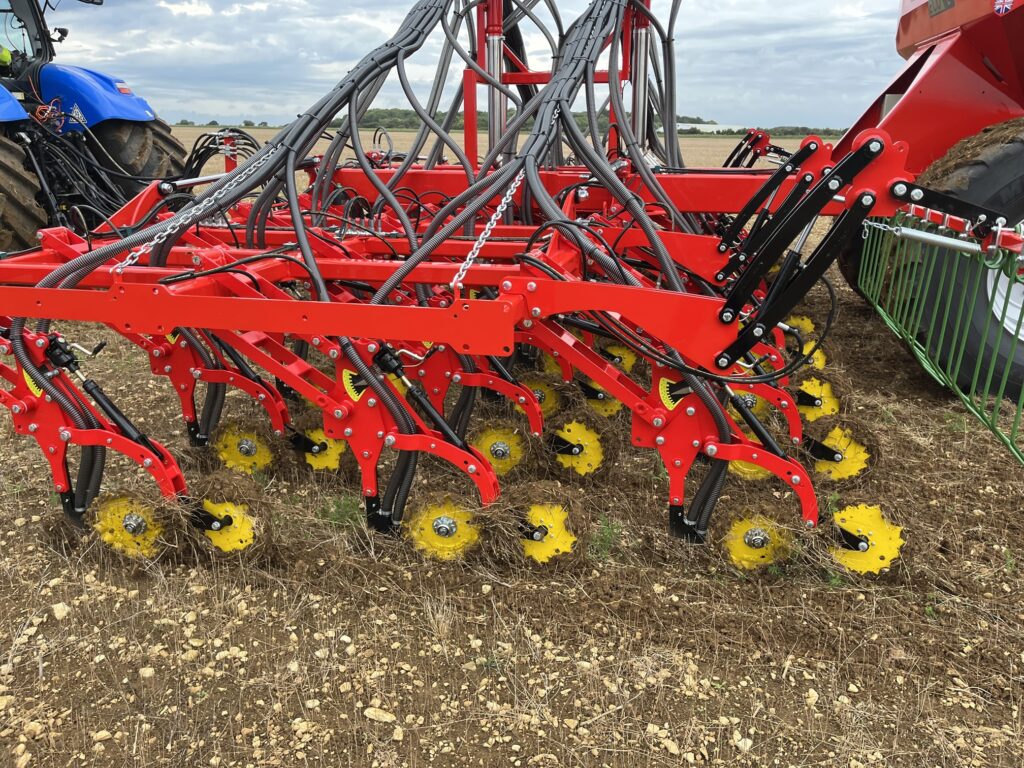


Dale Drills and FETF Eligibility
In a recent announcement, DEFRA has disclosed the opening round of a new phase for the Farming Equipment and Technology Fund (FETF) grant applications. This funding initiative serves as a valuable resource for farmers looking to invest in cutting-edge equipment and technology, with the aim of enhancing productivity and promoting environmental sustainability.
Dale Drills is delighted to confirm that once again, its range of No Till Seed Drills qualifies for inclusion in this funding program. In the previous cycle, numerous customers successfully secured FETF grants to support their investment in a new machine from our ECO and MTD range.
Dale Drills remains committed to assisting farmers in optimizing their operations through innovative equipment, and the FETF presents a valuable opportunity for those seeking to integrate our seed drills into their farming practices. Don’t miss the chance to enhance your productivity and contribute to a more sustainable agricultural landscape. Contact us today to explore how Dale Drills can be a strategic partner in your journey towards efficient and environmentally conscious farming.


-
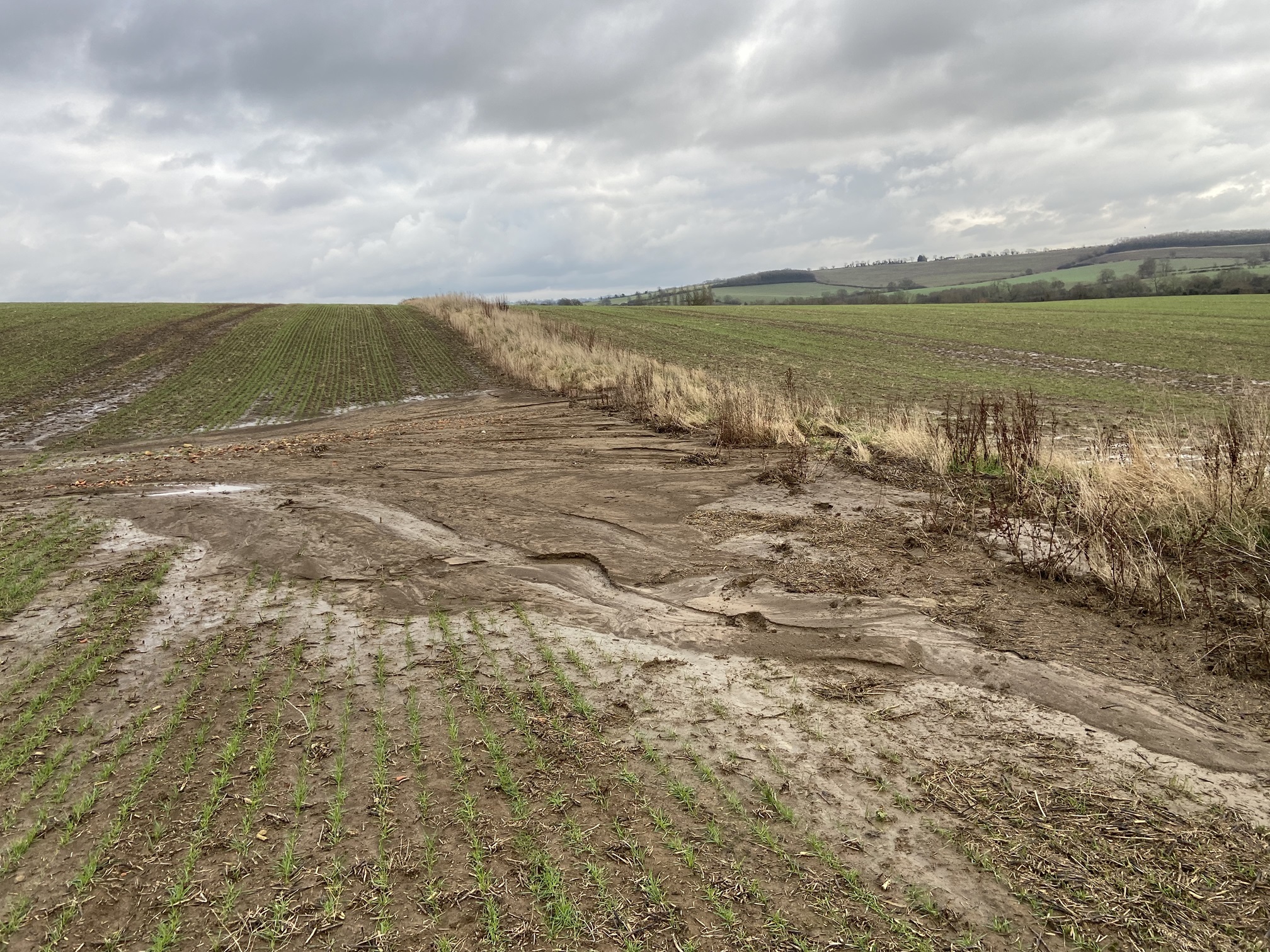
Navigating the Storm: Challenges in agriculture
Written by Joe Stanley
As I write this in the third week of March, I can reflect on challenging times both behind and ahead. On the heavy Hanslope-Denchworth series clays of the Allerton Project, we are yet to get so far even as to have terminated our cover crops, let alone apply any spring inputs to those autumn-sown crops which have survived the onslaught of one of the wettest winters on record – though we judge that only some 35% of our winter wheat area is even salvageable. Even were the incessant rains to cease today, we are likely looking at planting our wheat, beans, oats and barley well into the middle of April, significantly compromising potential.
In my view, extreme weather has been persistently afflicting agricultural operations in the UK since at least the summer of 2018; initially whole seasons began to oscillate to extremes, but more recently seemingly every month brings new weather records of one sort or another. From September 2023-February 2024, Allerton has recorded 626mm of rainfall (including the wettest February since records began in 1836) which already takes us to our median average annual total. I’ve no doubt that come May and June, we’ll be experiencing another extended hot, dry spell.
Here at Loddington, we have been focussing on soil health and resilience for two decades, undertaking the transition from inversion to reduced tillage, and finally to pure ‘direct drilling’ (where appropriate) culminating in the purchase of a Horsch Avatar for our autumn campaign last year (a journey outlined by our director, Dr Alastair Leake, in Direct Driller issue *[1] last year). We have ample data to demonstrate the benefits (all things being equal) of this transition, both economic and environmental.[2] However, despite the enthusiasm with which he have embraced this journey, our experience of recent years – and especially the last twelve months – is leading me to question whether the climate mitigation measures which I expounded in the last issue of DD[3] are any longer sufficient to build the levels of field and soil resilience required to endure the extremes of weather with which we are now faced.
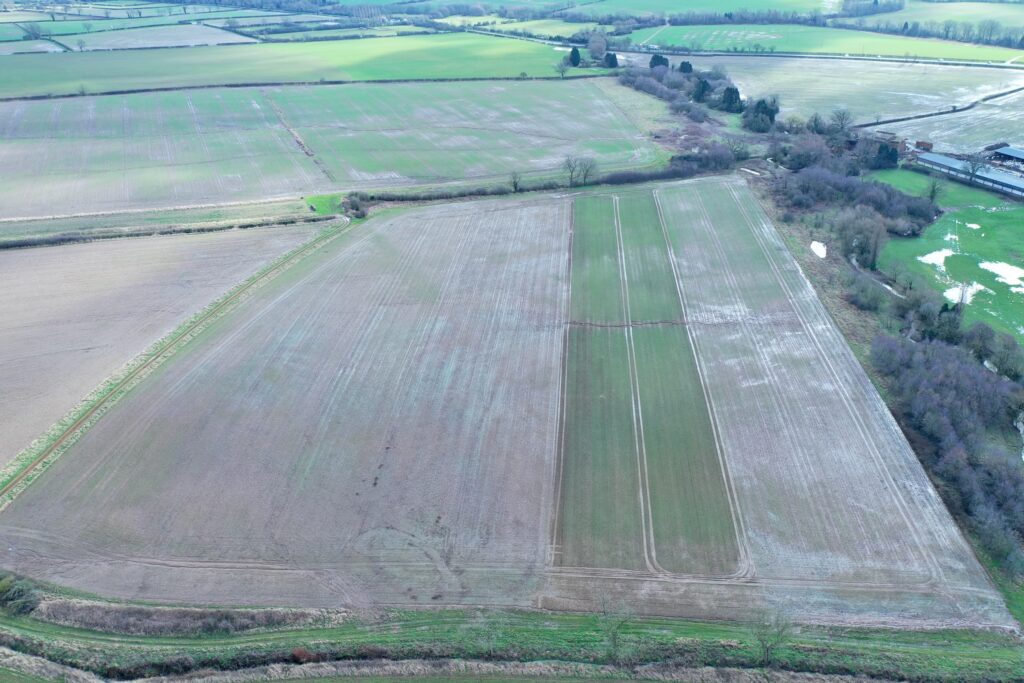
default In spring 2023, central and southern England experienced some 200% of normal rainfall, which delayed our own drilling campaign (interrupted the previous October by rain) until the final week of April and into early May. Clearly, beans and wheat planted so late in the season were always going to need a fair wind behind them to turn a profit; alas, May and June saw some 20% of normal rainfall and it was not to be. Final yield was correspondingly disappointing, with the anaemic spring beans not being cleared until the second week of October. Wheat subsequently direct drilled mere days ahead of Storm Babet (which dropped 65mm of rain in 24 hours) and the eight subsequent named storms to date has, as reported above, not thrived.
Twelve months on, we look to be facing the same situation once more: the prospect of late-drilled, thin crops with poor agronomic performance and negative gross margins. However, for the ground originally earmarked for winter (then spring) beans, this season we don’t intend to take the same risk again, instead planning to plant a summer fallow allowing us a good entry into wheat this coming autumn. Working alongside our seed partner, Kings Crops, this will also give us good insight into the potential for the new SFI summer fallow option to be available from next year.
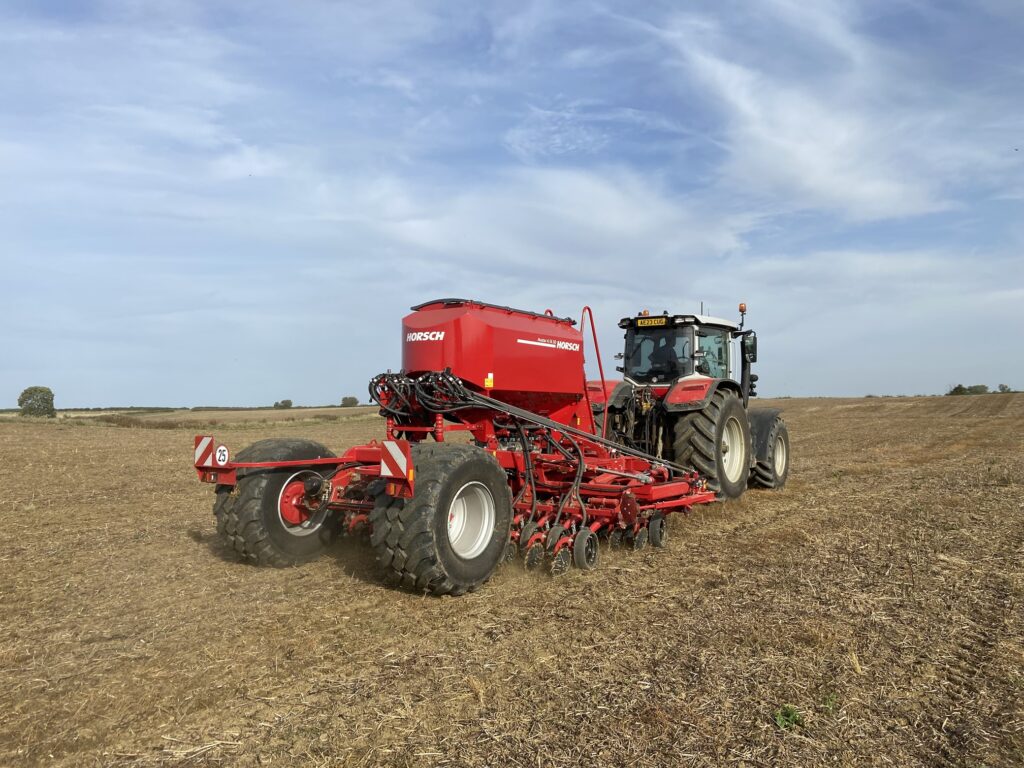
Another aspect of last winter’s extreme rainfall has been unprecedented levels of soil erosion across the estate. Once again, despite a long focus on conservation (and more recently regenerative) agriculture and measurable improvements in soil health, the level of soil damage (exacerbated by late-planted, unplanted or failed winter crops) has been terrible to see – and the value of well-established cover crops never been better demonstrated. In a ghoulish way, I am looking forward to seeing the results of lidar scans and soil sampling undertaken on our most impacted fields which will give us a monetary value of the soil and nutrients lost over the course of the winter, data which we will share with our 2,000 or so annual visitors to help focus minds on the importance of soil protection.
Yet the question remains – on our rolling slopes and grade 3 marginal land, and in the absence of direct payments, can we continue to weather the extreme conditions which are likely only to intensify in their effects? Or might more dramatic resilience-building measures be required?
The Allerton Project has commissioned work looking at what might be necessary in our wider catchment to meet government targets under the 25 Year Environment Plan to reduce nitrogen, phosphorous and sediment pollution from agriculture into water by 40% by 2037. The modelling suggests that (in a silty-clay/silty-clay loam landscape with relatively steep topography) some 47% of land currently in arable production would need to be put to other land uses to meet those targets (a retasking of some 1300ha). This would include afforestation, arable reversion to grassland and much more extensive use of buffer strips. The modelled production loss would be some 10,500t of wheat/year.
These targets are, of course, national and not on the individual farm or catchment level, but nevertheless our figures indicate the potential scale of the transition required in a challenging landscape such as ours – especially as winter rainfall becomes ever more intense. As financial options to enact such land use change become more attractive – whether from public or private coffers, or a combination of the two – farmers can hardly be forgiven for considering them, given the experience of recent years of trying to grow profitable commodity crops traded at wildly fluctuating global prices with stubbornly escalating input costs.
Indeed, at my own home farm near Loughborough in Leicestershire, the driving motivation behind entering a Mid-Tier stewardship agreement in 2021 was climate change: I had had enough of seeing arable soils disappear downslope during wet winters, and crops wilting and dying on our lightest land. Fields that had happily been in arable production for decades were placed in a mixture of legume fallow (AB15) and diverse herbal leys (GS4). I have seen nothing since to make me think I made a poor choice in so doing.
I think that many farmers will be facing an increasingly difficult choice in the coming years as to whether they persist with their current methods of production, or take advantage of novel income streams to significantly alter the dispositions of their holdings. Ironically, perhaps, given the current zeitgeist around ‘plant-based diets’, it’s actually in grazed pasture that the safest agricultural land use can be found.
It seems unfortunate that, just as momentum is beginning to build around a significant transition to more sustainable arable production methods which focus on the laborious task of improving soil health, the weather is making that transition more challenging than at any time in living memory (and perhaps the past few thousand years). Indeed, one of the significant observations we’ve been able to make this winter at Allerton is that, in our long-running cultivation comparison fields, our ploughed plots have survived the rain in far better condition than those that have been direct-drilled! Although a transition away from inversion tillage is an essential element of improving soil health, there’s no denying that the route to more sustainable production is neither straight nor simple!




-

DD Conference Area within Cereals
TIMETABLE AND WHAT TO EXPECT
Each session will have a main guest speaker who will speak for roughly 20 minutes followed by a 20 minute panel
question and answer session. The panel will consist of a farmer, an agronomist, a person from the trade and the host.
Topic 1: SFI, what to claim and how to profit from regen ag.
9:30 – 10:30
What SFI options are you claiming? SAM1, HRW3, AHL1, AHL2, AB1, AB8 and others all work in combination with regen ag farming. What’s better than getting paid once? Getting paid twice and improving your soils at the same time. But what are the best combinations for different soils types and farms…?Topic 2: Machinery and regen ag.
11:00 – 12 noon
Many say that the more you embrace regen ag then the less machinery you need. With the new SFI requirements, things like toppers are becoming as essential as the direct drills themselves, but what are the easy wins? To decrease your fuel spend each year and release the capital expenditure on machinery…Topic 3: Cover crops; What they do to your soils and how they deliver profit into your business.
13:00 – 14:00
Firstly, there are cover crops and then there are cover crops! With so many different mixes and so many different options, cheap mixes might meet the needs of a scheme, but if you want to double the benefit of better rooting, soils and biomass, then spending a bit more on the right mix for your farm will see an increased benefit!Topics 4: Nutritional benefits from regen farming
14:30 – 15:30
SAM1 is paying farmers to better understand their soils and have a plan, but do you know how the various indices interact and how getting them right leads to increased yield? We look into how the right nutrition leads to higher profits and better soil.Read about all the conference speakers here…






-
Agronomist in Focus – Mike Thornton
High yielding Bamford signals landmark change in UK soft wheat sector
Written by Mike Thornton, UK Head of Crop Production at Procam.
With just 5 new varieties recommended for the 2024-25 season, 10 removed and a much-improved layout, the new Recommended List (RL) for winter wheats has a cleaner, fresher look that should enable growers and agronomists to navigate their way more effectively through a maze of data towards an informed decision.
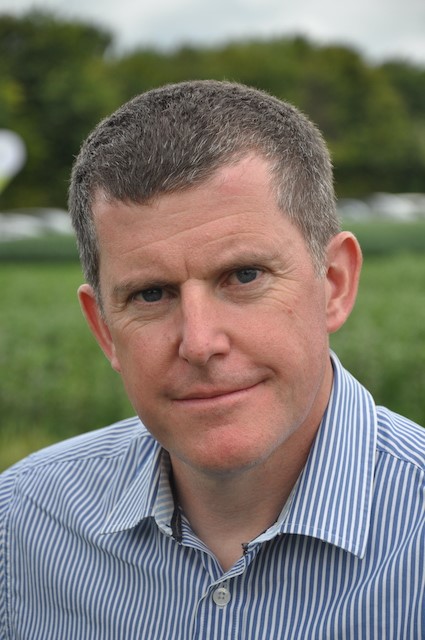
Despite a strong line-up of new winter wheats this year, the overall stand-out based on its yield, wide marketability, high specific weight, and impressively consistent disease resistance ratings has to be Bamford.
With a treated yield of 106%, it’s 6% ahead of the next best Group 3 soft, and with an untreated yield of 92%, it has the second highest untreated yield on the entire winter wheat RL – regardless of classification.
The new soft wheat, from independent breeder Elsoms Seeds, first caught our attention in NL1 trials following a tip-off from my Procam colleague, Seed Manager Lee Harker.
I recall Bamford’s specific weight being over 78kg/hl in that first trial when most other wheats struggled to get close to that type of figure. The untreated Bamford plot looked incredibly clean and, with growers often looking for opportunities to lower agrichemical inputs, its 92% untreated score is a compelling figure on any variety’s CV. It’s undoubtedly the best Group 3 to come onto the RL in many years, but I believe growers should consider it, first and foremost, as a very high yielding wheat – not simply as a Group 3 biscuit wheat.
Although there’s very little to separate Bamford and LG Beowulf on this year’s list, Bamford’s earlier maturity may well give it an agronomic edge with growers in the North.
From speaking to Christian Maltby, Seed Manager at Bartholomews, he believes that, for growers based in the South, Bamford’s higher yield when compared to almost all other winter wheats would be its greatest attraction.
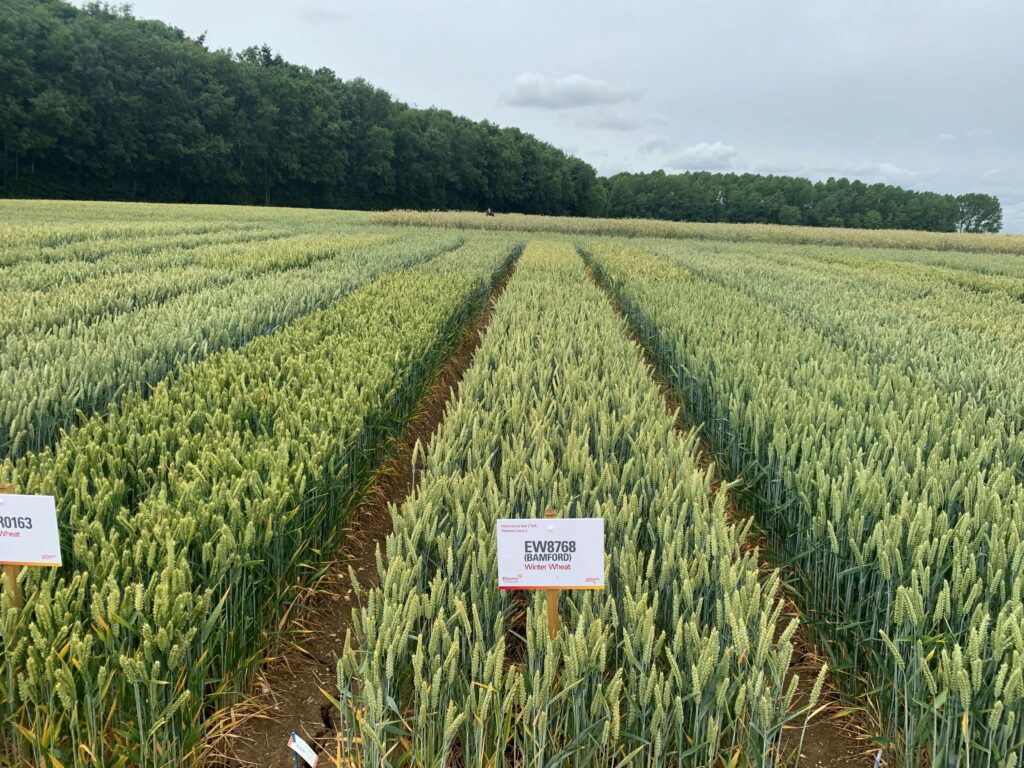
Growing high-yielding Group 4 feed wheat in the South-East is often less favourable due to a lack of local feed homes and export interest. Assuming growers can grow Bamford to a minimum 11% protein, allied to its robust Hagberg and specific weight data, high quality UK soft Group 3’s like Bamford are highly marketable for export, due to a lack of Group 3 wheat being grown in other countries for the Iberian market.
Christian felt that with increasing costs of fertiliser, and the higher risk involved in pushing some varieties to achieve 13% protein, growing a Group 3 to achieve 11% protein would be a preferable option for some growers. As a merchant, they’re looking forward to seeing how the variety performs on a larger scale and expect to see strong seed demand this autumn. Their longer-term expectation is that subsequent high-yielding Bamford wheat crops, grown to a specific minimum grain quality will increase the market share of planted Group 3’s in the UK.

Bamford looks well equipped for earlier drilling dates, which will appeal to growers following some serious crop establishment challenges in 2023. It’s straw strength and moderate speed of development in the autumn make it well suited to earlier drilling, particularly in the north of England and Scotland where September drilling dates are preferred. Bamford also offers a fast speed of development in the spring and has an erect growth habit. Two significant agronomic characteristics that will help it to outcompete higher grassweed burdens – a key problem for UK wheat growers during the last 2 seasons.
It has been a long time since we’ve seen a variety on the RL with a 6% yield advantage over the next best variety in its group. Bamford has the potential to revitalise the Group 3 sector and I believe it signals a landmark change for the UK soft wheat sector.


-
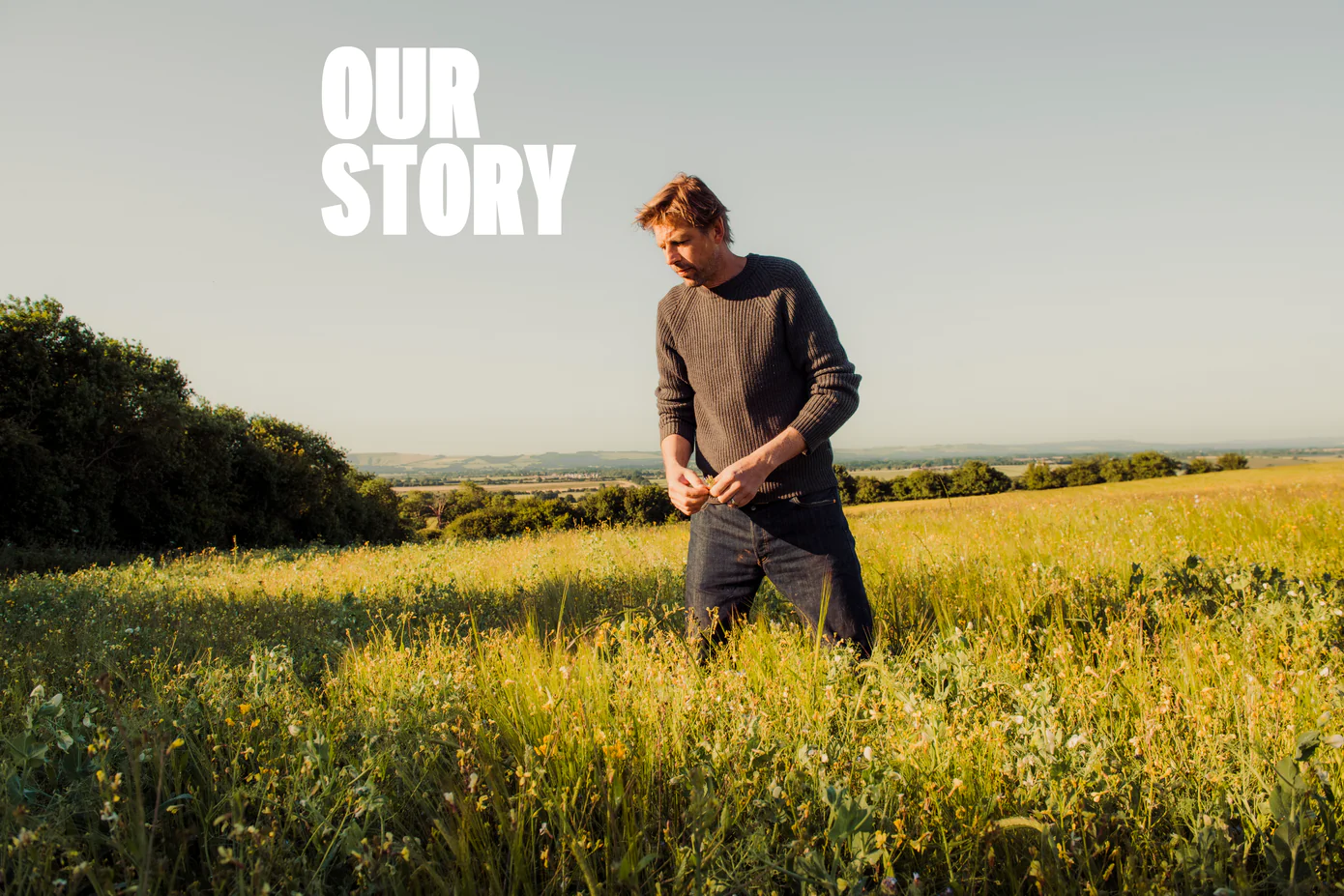
Farmer Focus – Andy Cato
During an unrelentingly wet February, the only ray of sunshine was the arrival of our Red Sussex calves. It’s always amazing to watch mother and baby choreograph an apparently impossible dance in which a sodden, half blind wobbly legged newborn finds the source of its milk. About a month before calving, we moved them up above the flood, onto one of our four sandier fields where the ground has remained relatively firm underfoot. On the lower clays that make up most of the farm, it’s a different story.
There are some signs of progress. After harvest last year we got across a lot of ground with the subsoiler. Where there was standing water last winter, there hasn’t been this time around. The role of diverse living roots in increasing water holding capacity shouldn’t be underestimated either. Sunlight is the only source of regenerative energy coming into any farming system and the more we can capture, the more carbon flows through root exudates and the greater the porosity created by the creatures of the subterranean soil universe. Porosity and connectivity are key measures of soil health used by Rothamsted microbiologist Andy Neal, and explain the 354,000L per Ha of increased water storage in the top 30-cm of soil he estimated to result from a 1% increase in soil carbon. This has been misinterpreted in some forums, where it was said that there’s no way soil organic matter can absorb that much water. But water is not stored in soil because organic matter absorbs it, but because of capillary action in pores smaller than 100 microns, formed as a result of organic matter decomposition by microbes. The more pores of this size there are, the more water is stored. Any data of this kind will of course be site specific, but this estimate is derived from direct observation and measurement of the increase in pore space due to increased organic carbon stocks. It gives an idea of the vast potential to build farming systems more resilient to increasingly wild weather.

Between the subsoiler and living roots, we’ve managed to get a couple of hundred sheep across the arable area this winter,without too much damage. But they haven’t been grazing any winter cereals. The plan was to subsoil, followed by a stale seed bed operation to get on top of the rye grass and couch which has been an issue since we arrived three years ago, and which got a lot worse thanks to thin crops in last year’s drought.
But the rain started and never stopped, and it became clear we’d have to resort to cover crops and switch to spring planting. Like everybody else, this meant accepting sky high seed prices and hoping for a kind end to the winter. The wettest February since the 1800s wasn’t part of the plan. Patience becomes difficult as March becomes April but hope springs eternal that rich canopies of bi- and poly-crops will soon be emerging from nicely warmed ground. Hopefully rapidly enough to evade the inhabitants of our huge local rookery.
Alongside wheat and beans, we’re also planting barley and pea. On a smaller plot, we’ll be sowing spring barley, rye and peas, the rye and barley combination inspired by the African tradition of Maslins. These blends of different cereals were common and remain so in certain areas. Literature is limited but what there is often describes notable disease and drought resilience. To remove barriers to bi-cropping, Wildfarmed already offers whole crop processing to our growers. As such, it’s worth exploring further possibilities of crop combinations that can be separated successfully post-harvest. Rather than applying all our chemistries and ingenuity to maintaining monocultures, the vigour of diverse cover crop mixes suggests that it is worth pursuing the idea of harvestable in-field diversity, applying our science and ingenuity instead to seed separation.
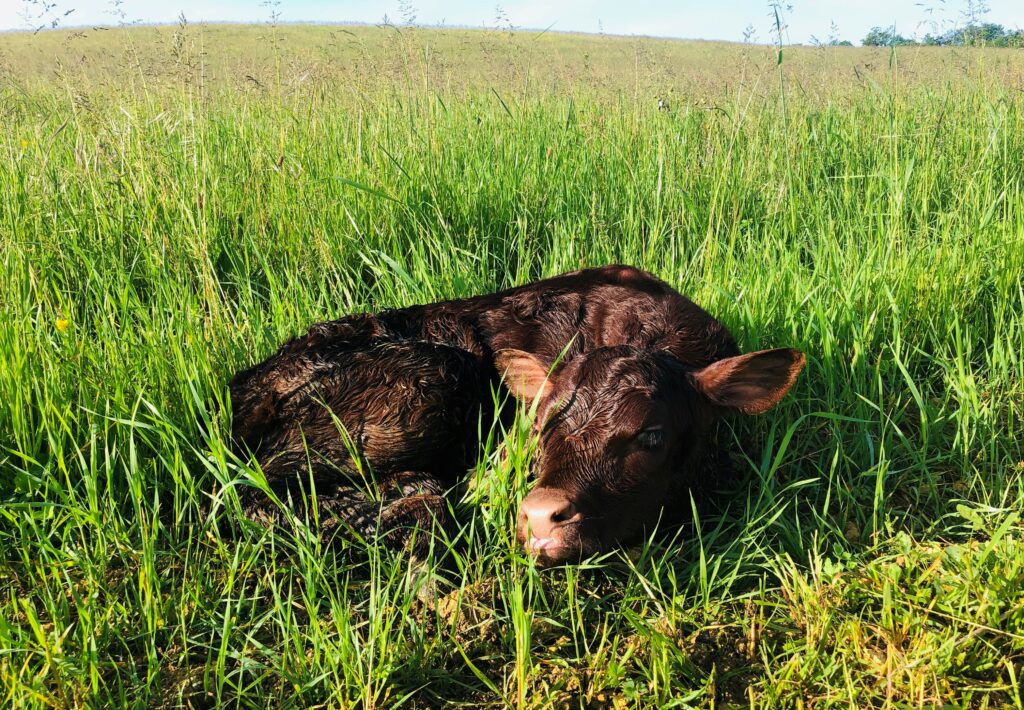
Last week I was asked to speak at a gathering of crop and soil scientists and farmers hosted by the Aurora Trust at Cambridge’s Sainsbury Laboratory. With a room full of research bodies, I was keen to put forward questions for which so many of the farmers I speak to want answers.
Black grass; there are growers using £150/Ha of mixed herbicides to try and remain in control. On the other hand, we have seen fields following summer long cover crops go from being the most black grass infested to the cleanest. What are the mechanisms at work here? If it’s a change in soil biology, soil porosity or shading, or a combination of those things, let’s understand it better so we can optimise the efficacy of the cover crop blends.
Glyphosate; last year, Wildfarmed teamed up with Rothamsted to look at which is least bad for the soil – terminating cover crops with a buffered dose of glyphosate or with shallow cultivations. On highly biological soil, our trials showed that after 7 weeks, there were no traces of glyphosate. But also, that the cultivated ground had regained its functional connectivity. We now need to find the funding to investigate the long-term effects of both practices on the soil microbiome; the chelating effects of glyphosate and any disease implications of micronutrient deficiencies that follow. And whether the effects of glyphosate and tillage are more persistent on degraded soils. Depending on the results, it may be that biologically-rich systems can be successfully managed with careful cultivations – something which many good organic growers would be keen to confirm – but it may also be that using buffered glyphosate to terminate cover crops is a useful tool in getting arable systems up the biological ladder.
Plant Diversity; The American scientist Mary Lucero describes the day that DNA analysis of a Desert Salt Bush plant came back as a match for the DNA of a whale. The explanation was that both plant and whale were host to the same salt loving fungi. This world of fungal and bacterial endophytes living inside every plant cell and moving freely between them is beginning to shed light on how diverse plant communities “signal for help” andreceive it. This science has urgent and practical applications. Dr Christine Jones has an amazing photo in which half of a field has died in an Australian drought. The other half, sown with companion plants, is thriving. What are the best functional groups to confer this kind of resilience on cereal crops? At what seeding rates? Let’s apply science to understanding how these mechanisms work to refine their application at scale.
Disease; there are myriad examples of farmers using nutrition management for successful disease control. In the US, John Kempf’s AEA team are doing this across 4 million acres. On a more modest scale, but across the UK nevertheless, Wildfarmed growers are using plant SAP analysis and nutrition management to replace pesticide applications. Farmers around the world cite innumerable examples of crop diseases deemed incurable by chemistry that have been rectified through nutritional integrity and biology. Yet still this is not the subject of mainstream scientific enquiry, and here in the UK we don’t even have a lab capable of old leaf / new leaf SAP analysis.
There were lots of positive conversations afterwards from different research bodies keen to work with the Wildfarmed community and take this research forward. Updates to follow.
Meanwhile, back to the here and now. Extremes of weather are cruelly exposing the fragility of recovery in soils, even those managed under no-till systems for a long time. When we compare the resilience of field margins to the fields themselves, everything points to biology as the critical difference. In the words of Wendell Berry
“We have harassed the temporary power afforded to us by fossil fuels to bypass nature’s self sustaining complexity. But in doing so, we have created something very fragile, complicated and expensive”
If biology is the key, the role of a summer long cover crop as a massive biological kick start seems to become more and more important. Despite the recent announcement of restrictions on some elements of SFI, this doesn’t affect the plan amongst some Wildfarmed growers to build a rotation around an NUM3 summer long cover, followed by, for example, a winter wheat and bean, a winter cover, then into a spring barley and pea.
Chairman of BASE UK, Camgrain Farmer Director, inspirational Cambridgeshire Wildfarmed grower…introducing all of David White’s work would take me over the word count. But last autumn he and I took the NUM3 idea, together with the theory behind the strip cropping / inter-row mower approach, and combined it into what he has christened the Abbey Road system. But that’s a story for another day.



-

Changing crops in a changing climate
The impact of rising CO2 levels on the nutritional quality of crops
Written by Louis Gray, UWE & Dr William Stiles, Aberystwyth University.
Take home messages:
• Increasing levels of CO2 in the atmosphere are expected to change the nutritional composition of plants, and plant growth patterns
• Certain existing crops may start to perform less well, and other crops which are currently less widespread may become more suitable
• Understanding what crops will perform best under elevated CO2 scenarios is essential in order to maintain food securityClimate change is anticipated to have significant impacts on crop production systems from factors including changing weather patterns and increased pest and disease incidence. In addition to the factors surrounding climatic change, increasing atmospheric CO2 will also drive direct effects on plant growth potential and yield outcomes, and the nutritional composition of crop plant tissues. Developing an understanding of what influence this will have on crop growth patterns is essential in order to maintain food production and achieve food security.
The principal driver of climate change is the emission of greenhouses gases, chiefly carbon dioxide (CO2), as a consequence of human activities. The amount of CO2 in the atmosphere is now at the highest it has been in all human history, and almost certainly the highest it has been in the last million years (currently ~420 ppm). According to the Intergovernmental Panel on Climate Change (IPCC), CO2 levels could potentially rise to 670 ppm by 2100 and temperatures may rise by about 3-4 °C. This is expected to have substantial influence on agricultural production potential and on UK food security.
The increasing level of CO2 in the atmosphere is contributing significantly to changing weather patterns and other phenomena associated with climate change. Higher levels of atmospheric CO2 are also expected to alter plant growth patterns, as this gas is essential for photosynthesis. This may result in an increase in net primary productivity and therefore carbon capture, but it would also be expected to be complicated by a range of factors such as water and nutrient availabilities, heat stress, and others.
Changing plant growth patterns can also have significant impacts on the nutritional quality of cultivated crops, which may lead to shifting patterns of crop choice among producers, subject to consumer needs and demands, and shifting crop suitability, as the changing environment alters which crops will offer the greatest potential for yield and nutritional outcomes. Wales and the UK are currently reliant on food imports to meet the population’s nutritional requirements. Considering the potential complications for food imports caused by Brexit and the environmental impacts associated with importing food, a shift in the type of crops the UK produces could be beneficial for the nutritional needs of the population.
Effects of increasing CO2
Plant responses to increasing atmospheric CO2 is a highly debated topic. A rise in CO2 is most often associated with increases in plant productivity due to higher rates of photosynthesis, but this is likely to be complicated by a range of factors including water and nutrient availabilities. Additionally, the different biological mechanisms employed for photosynthesis are also likely to have an effect.
There are three main types of photosynthesis: C3, C4, and CAM (crassulacean acid metabolism). The majority of food crops utilise either C3 or C4 photosynthesis (CAM is found in desert plants and is a strategy for minimising plant water loss), but the difference in biochemistry during photosynthesis between C3 and C4 crops may make certain plants better suited to high atmospheric CO2 conditions. C3 is by far the dominant form of photosynthesis found in the plant kingdom, used by around 85% of plant species.
This includes the essential cereal grains wheat, rice, barley and oats, as well as peanuts, spinach, soybeans, potato, tomato and many other crops. C4 is utilised in only around 3% of terrestrial plant species, but these plants include some other important food crops, such as maize, sugar cane, millet, sorghum, and cabbage. To put things in simple terms, the difference between C3 and C4 photosynthesis centres on how plants use CO2 to make carbohydrates.
During photosynthesis, an enzyme called RuBisCO is used to capture CO2, which is then converted into carbohydrates through plant biochemistry. In C3 photosynthesis, this process happens within the plant cell that the CO2 enters into, through the stomatal opening. In C4 photosynthesis, once CO2 enters the plant it is transported to a second cell via openings between cells called plasmodesmata. This is done to concentrate the CO2 where the RuBisCO is located, increasing process efficiency. The advantage this offers a plant is a reduction in photorespiration (which requires energy) and water loss, and better overall water-use efficiency.

Cereals
Cereals are incredibly important crops, providing billions of tons of protein globally for human consumption and livestock feed. Elevated CO2 has been found to negatively impact the nutritional quality of grain crops. For example, studies on barley, rice and wheat, reported that elevated CO2 mediated a protein reduction of 15, 10 and 10%, respectively.
However, this effect is not consistent across all cereal crops. When considering grain crops such as maize or corn, elevated CO2 does not appear to affect protein and micronutrient levels to the same degree. This difference in response is attributed to variations in the biological mechanisms employed by these plants when undertaking photosynthesis. For C3 cereals, such as wheat, increasing CO2 levels have been reported to drive reductions in zinc, iron, nitrogen, and protein in grain tissue.

The impact of elevated CO2 on nutrient concentration in grains has been shown to vary with soils and crops, with a greater negative effect on grains observed for fertile soil than infertile soil. Variability has also been noted between different genotypes and cultivars of the same crop, indicating some strains that may be better suited to high CO2 conditions. For C4 cereals, such as maize, rising CO2 may not cause the reduction in protein concentration reported for C3 cereals, but these plants may also not benefit from the additional growth derived from the stimulation of photosynthesis.
Given that C4 crops are able to concentrate CO2 internally, this means photosynthesis will be CO2-saturated even under normal CO2 conditions. Therefore, there will be no increase in the photosynthetic carbon assimilation and no increase in the rate of photosynthesis due to elevated CO2, resulting in very different responses in nutritional quality than C3 crops. Although there seems to be little to no nutrient penalty associated with growing C4 plants under elevated CO2, current staple C4 crops might not be the best crops to tackle potential future malnutrition due to elevated CO2.
This is because the nutritional quality of these C4 staples is generally not high due to poor protein digestibility rates, or low concentrations of compounds such as lysine. Indeed, a nutritional comparison of C3 and C4 grasses found that C3 grasses had higher protein content, but lower fibre content than C4 grasses when grown under elevated CO2. Thus, this could be considered to indicate that C3 food crops would still have a higher nutritional quality than C4 crops under elevated CO2 conditions.
Legumes
Legumes are an agronomically important crop group due to their ability to fix atmospheric nitrogen (N). The incorporation of legumes in human diets can reduce the risk of a number of diet-related diseases such as obesity, diabetes, cardiovascular problems, and cancers that have increased over the last few decades.
Variation in legume nutritional quality is also expected in response to elevated CO2 levels, but has been to shown to vary across different legume species. In a study considering bean and soybean varieties, elevated CO2 did not affect the seed protein concentration of soybean, but increased seed protein concentration in beans. Lipid concentration was unaffected by elevated CO2 in both beans and soybeans.
Soybean showed a significant reduction in manganese and potassium, and an increase in calcium at elevated CO2 when compared with ambient CO2 levels. Beans also showed a reduction in manganese and potassium, with an additional reduction in iron, and an increase in magnesium. However, legumes appear to be less susceptible to changes in N concentration under elevated CO2, which contrasts with the 15% decrease observed in non-leguminous C3 species.
This is due to factors including the decreased uptake of N from soil in non-leguminous plants, due to lower transpiration at elevated CO2. Legumes might also be better suited to limitations in N supply, as elevated CO2 can promote the rate of N fixation in nodule symbionts. In addition, increased C availability at elevated CO2 will improve N assimilation rates, in contrast to the impaired N assimilation associated with other non-leguminous C3 species.
Nevertheless, the N fixation benefit from elevated CO2 observed in some legumes may be constrained by other environmental stresses, such as water availability. An increase in legume production could be the solution to increasing environmental stresses and changes, as many appear to be quite resilient to predicted changes. Diversification of legume production and incorporation of new legume cultivars might also be beneficial.
Cowpea, for example, a crop not commonly grown in Europe, not only has high protein quality, nutritional value and N-fixing ability, but is also more drought and heat resistant than many other legumes and other crops. Cowpea is also tolerant to low fertility soils and a range of soil pH, making it an interesting crop to consider alongside climate-change induced environmental instability.
Vegetables (root and leafy)
Elevated CO2 has been shown to increase the fructose, glucose and total soluble sugar content and to decrease protein, N, magnesium, iron, and zinc content of vegetables. For root vegetable species, elevated CO2 was found to result in significantly higher yields, yet significant decreases in protein, vitamin C and fat content in carrot, radish and turnip. Additionally, all three of these vegetables showed an increase in sugar and fibre when exposed to higher levels of CO2.
Elevated CO2 also decreased the amount of fatty acids, amino acids and a number of important minerals. Although these vegetables are currently high in nutrients, these findings suggest that future levels of elevated CO2 could in fact have a detrimental impact on the nutritional quality of root vegetables and alternative crops may need to be considered in future food systems.
The same may not be true for leafy vegetables. The nutritional value of spinach has been shown to increase under elevated CO2, with 14% higher vitamin C concentrations observed in spinach when compared with conventional conditions. This is likely to be highly variable across species and cultivars, and a wider study considering elevated CO2 effects on the nutritional quality of leafy vegetables, at a standardised 250-ppm increase, showed no overall effect.
This was supported by meta-analysis focusing on iron, vitamin C and flavonoids, suggesting that elevated CO2 had no effect on these nutritional quality parameters. However, this meta-analysis did suggest that elevated CO2 increased antioxidant concentrations in leafy vegetables.
Fruit
Fruits are also important sources of beneficial and essential nutrients for the UK population. A much larger proportion of fruit could potentially be grown within the UK than is currently, with some fruits likely to become more favourable as the climate changes. To understand the effects on fruit species, two commercially important species are considered here: strawberries and tomatoes. For strawberry, elevated CO2 and higher temperature both caused significant increases in total polyphenol, flavonoid, anthocyanin and antioxidants in two strawberry varieties compared to plants grown under ambient conditions.
The responses of strawberries were also significantly altered by the interaction of elevated CO2 and higher temperature, and all results were variable across strawberry varieties, suggesting some varieties are likely to offer better yield outcomes in these altered conditions. Interestingly, strawberry fruit grown under high CO2 (950 μmol mol−1) and high temperature (30 °C) was found to be rich in antioxidants and polyphenols, which could be beneficial in terms of human health.
For tomato, the evidence of effect is more variable. Elevated CO2 has been reported to lead to substantial reductions in protein, vitamin C, zinc and a range of other important nutrients and minerals. Contrastingly, studies have also shown increases in iron, copper, and certain nutritious compounds including ascorbic acid (vitamin C) under elevated CO2 when compared to ambient and open field conditions. As such it is challenging to conclude the effects of climate change on tomatoes grown in the UK, but the studies undertaken may at least indicate some potential benefits. Additionally, factors relating to the soil type, temperature and other environmental stresses would also be expected to influence overall effect.
Summary
Welsh agriculture currently faces significant challenges with regard to reducing the amount of greenhouse gases produced as a result of land management activities, whilst simultaneously finding ways to maintain food production in this changing climate. The implications of elevated atmospheric CO2 on crop production and the nutritional quality of plants is complex. While some crops might respond negatively to future climatic conditions, others may benefit. This could depend on a number of factors such as their photosynthetic pathways.
Many of the effects are likely to be contradictory depending on the crop plant, specific cultivar, and the environment that it grows within. Due to the different biology and metabolic pathways of different crops, care must be taken when comparing the responses of different cultivars and crop families. It’s important to study the individual responses of crops to elevated CO2 and other environmental factors as well as compare similar groups in order to understand the complexity of the impact of environmental stresses on the nutritional quality of food systems.
Nevertheless, understanding the effects of elevated CO2 on the crops on which we currently rely is essential in order to build a picture of how crop choices will need to change, and what crops should be targeted in the future, in order to meet the nation’s nutritional requirements and to maintain food security.




-
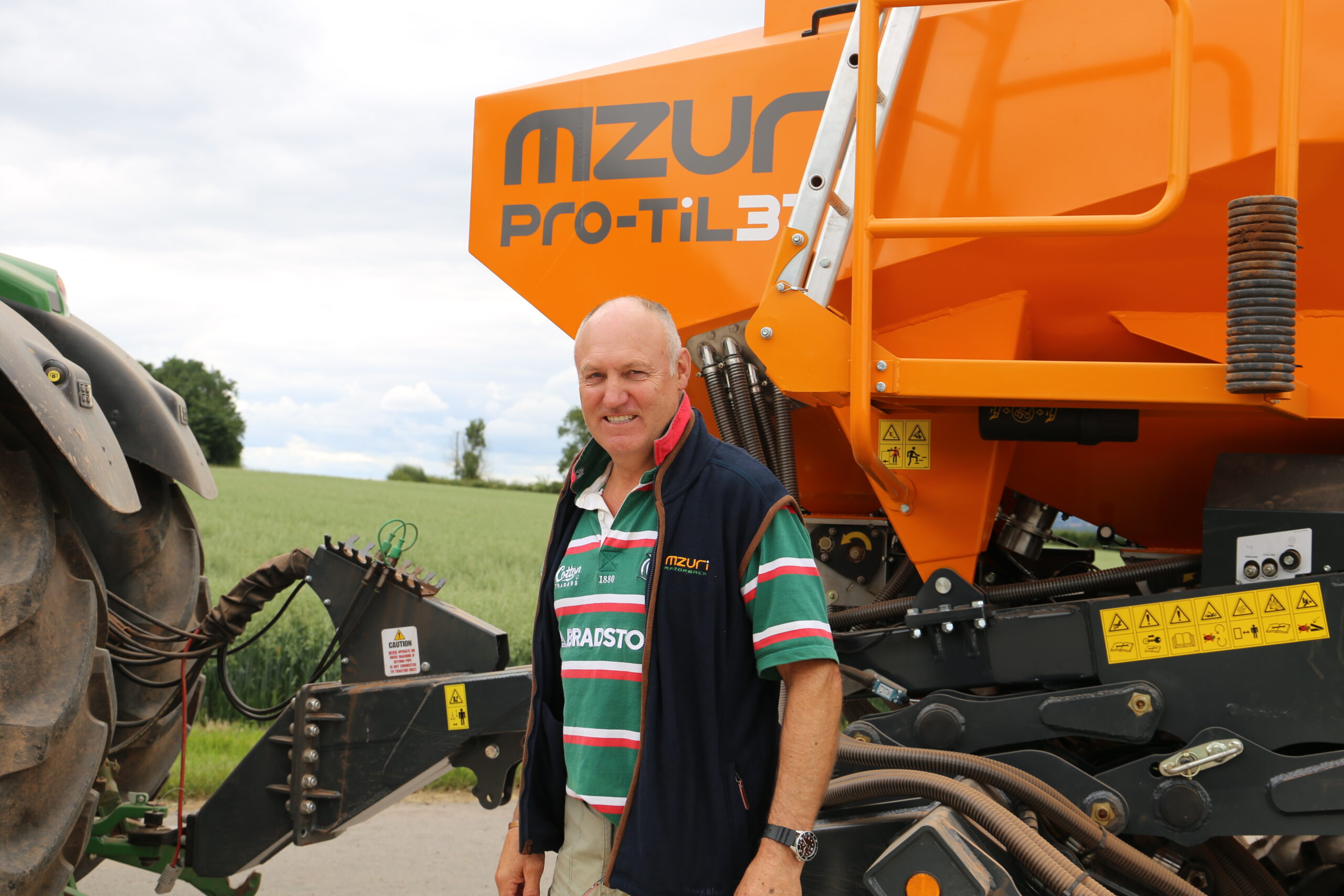
Drill Manufacturers – Mzuri
The Mzuri system delivers consistency and reliability in Herefordshire
Acres – 652 plus contract work
Type – Arable
Soils – Gravel loam, Bromyard series; Silt, Clay, Loam
Cropping – Wheat, OSR, Spring Oats, Winter Beans
Machinery- Mzuri Pro-Til 3T, John Deere 155 & 215, Cambridge roll with paddle boards, double press
In the picturesque countryside of Herefordshire, a farmer is singing the praises of a British drill manufacturer that has revolutionised his farming practices. Meet Adam Lewis, the forward-thinking farmer at the forefront of sustainable agricultural change. An AHDB monitor farm and an advocate for regenerative agriculture, Adam is also a Mzuri Ambassador supporting growers with their transition to single pass crop establishment through his own real-world experiences.
Adam’s journey with Mzuri began in 2017 when he purchased his first Mzuri Pro-Til after a knowledgeable demonstration the previous year. Since then, he has become an enthusiastic advocate for the company and its unparalleled commitment to customer service. “I am continually impressed by the outstanding customer service from the Mzuri team, an aspect that sets them apart from other companies I have dealt with. The sales and service team go above and beyond.” praises Adam.
A particular challenge Adam faced which prompted him to go down the Mzuri route was dealing with changeable soils that caused uneven crop establishment due to varying conditions and moisture levels across the field. With the Mzuri system however Adam is able to achieve consistent establishment across his fields and farm, thanks to several key innovative features at the heart of the Mzuri Pro-Til’s design.
The Pro-Til features a leading tine which delivers fertiliser below the seed whilst also contributing to a clean, friable seeding zone. This ensures emerging crops have direct access to targeted nutrition required for even establishment and encouraging the quick get-away of crops in challenging seasons. Consistency of cropping is further strengthened by the Mzuri Pro-Til’s independent pivoting coulter arms, which individually guarantee accurate seeding depth thanks to hydraulic pressure exerted onto ground following depth wheels. Unlike simpler designs on the market, the inclusion of individual depth wheels ensure seeds are placed accurately across the width of the drill, irrespective of undulating terrain.
Between these seeded rows, previous crop residue is maintained on the field surface, acting as a natural shield protecting the soil from capping and erosion. The residue also contributes to improvements in soil organic matter, being utilised by worms and being allowed to break down naturally. As a direct result of leaving his previous crop residue on the surface, Adam has increased the soil organic matter content from 2.8% to an impressive 3.8%. Visiting guests have commended on the lift in soil colour, a visible testament to the positive changes.
The combination of these features, including operational and economic benefits, has resulted in a system that delivers for Adam year on year.
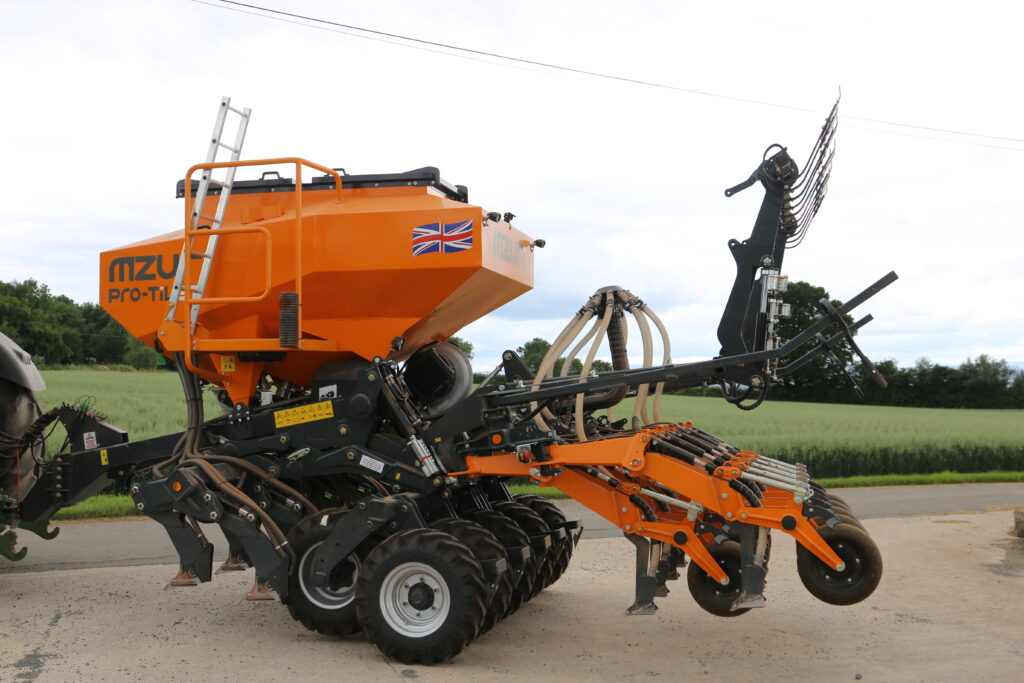
Minimising soil disturbance
Adam admits to being tempted by the call of a disc drill, however following a brief experiment on his own farm, it quickly became apparent that the disc drill could not deliverthe reliability and flexibility that Mzuri’s single-pass tine drill is renowned for.
Instead, still with an ambition to further reduce soil disturbance, Adam converted his Pro-Til to Mzuri’s 3-inch dual band coulters, which when drilled on 333mm row spacing delivers an impressive crop stand with minimal disturbance. “The coulter ensures minimal soil disturbance, even in adverse weather conditions there is no significant disruption to the soil” Commends Adam.
Another hallmark of a Mzuri sown field, is the wider row spacing over conventional establishment. Most commonly drilled on row centres of 333-363mm depending on model, the Pro-Til offers the ability to double this using it’s ‘Select’ mode which sees alternate legs raised to drill on 666-726mm centres, typically suited to Oilseed rape and Maize. Mzuri advocates drilling on wider row centres, which optimises light interception promoting healthier and well tillered crops. By widening space between crop rows, airflow is improved, which has contributed to a remarkable shift in folia and insect management practices for Adam.
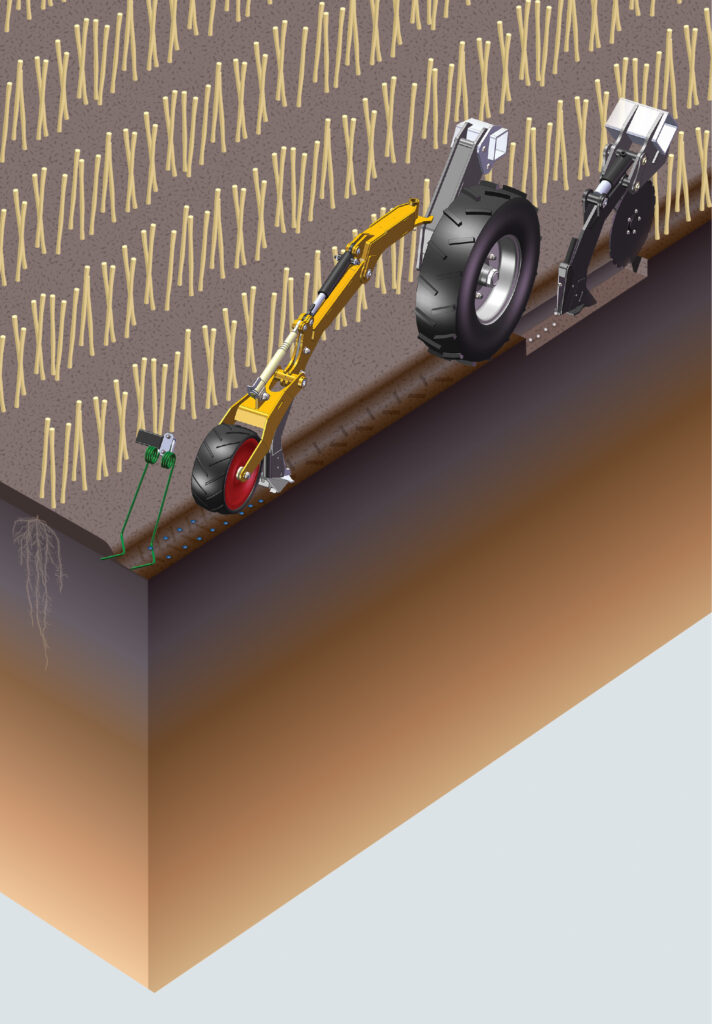
Adam’s approach to working with nature has seen insecticides eliminated for an impressive decade at Hampton Wafre Farm, which in turn has reduced production and labour costs increasing the profit margin across the farm. In particular, a natural ally, the Devil’s Coachman Beetle has benefited from Adam’s stance on insecticides and has itself taken charge of slug control, offering a sustainable solution to a historically challenging issue.
Since adopting the Mzuri system, Adam has seen a significant reduction in diesel usage for crop establishment, saving an impressive 40 litres per hectare. Not only does this save on operational costs, but it also reduces the farm’s carbon footprint and contributes to a more sustainable agricultural operation.

FETF Grant Funded
Last year Adam upgraded to a 2023 Pro-Til 3T, which was part funded through the Farming Equipment and Technology Fund (FETF). Under the category code FETF206 (2024 code), the grant funded £25,000 towards the cost of the drill which has gone on to provide considerable cost savings over conventional establishment. The 2024 round of the FETF has recently been released and now offers growers up to £40,800 for direct drills with fertiliser placement (FETF206), which includes the Mzuri Pro-Til range.
Adam commented “The grant has been fantastic for updating our existing system and has allowed us to make the changes needed to secure a sustainable long-term future, both for our business but also the environment.”
Adam acknowledges that change can be daunting, especially when it comes to altering established farming systems. However, he firmly believes that the Mzuri system has been the driving force behind significant improvements within his soils, including greater consistency and resiliency and contributed to a noticeable reduction in chemical applications. With the Pro-Til, Adam now enjoys extended drilling windows and enhancing overall productivity, making it a long-term management plan with significant benefits.


-
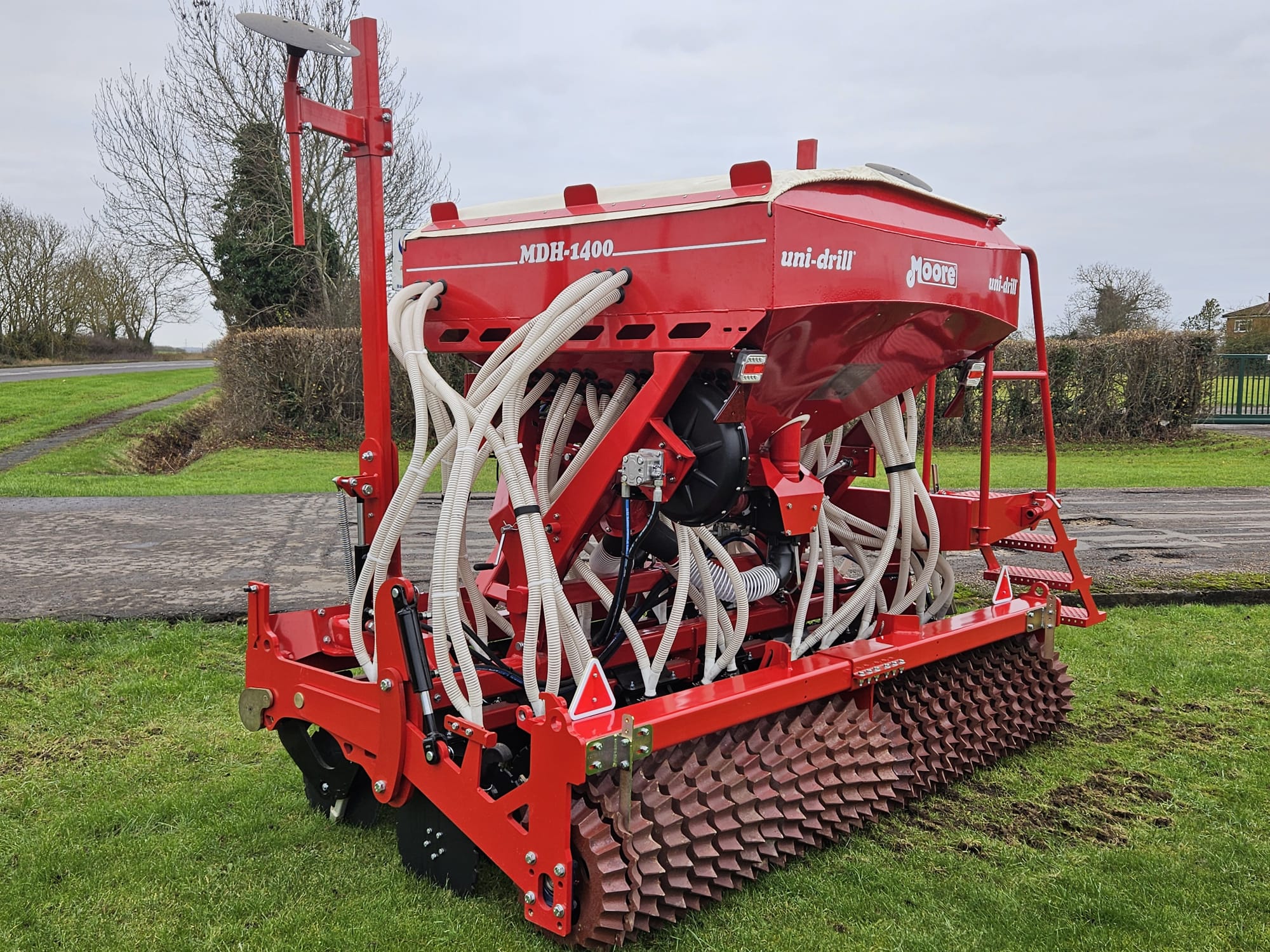
Moore Unidrill Celebrates 50 Years of Innovation with the All-New Grain & Fert Hopper Unidrill
In the realm of agricultural machinery, where innovation meets tradition, Moore Unidrill stands tall as a pioneer in direct drilling technology. This year marks the golden anniversary of the company’s groundbreaking invention, the Original and Still the Best Direct Seed Drill, and to commemorate this milestone, Moore Unidrill has unveiled the All-New Grain & Fert Hopper Unidrill, a testament to five decades of relentless dedication to perfecting direct drilling.
For half a century, Moore Unidrill has been at the forefront of revolutionizing agricultural practices with its direct drilling solutions. The company’s commitment to innovation and sustainability has set a standard that continues to resonate with farmers globally. The unveiling of the All-New Grain & Fert Hopper Unidrill not only pays tribute to the company’s rich history but also signals a new era of efficiency and versatility for farmers who want an adaptable, reliable, and quality direct drill.
The machine’s simplicity is a testament to Moore Unidrill’s commitment to providing farmers with machinery that is both user-friendly and dependable. The machine uses two Accord Metering Units and one Hydraulic Fan. This keeps the machine simple and easy to calibrate as well as using common of the shelf parts which are readily available from stock. The soil engaging part of the machine uses the same components as all other models of the Unidrill so you can be reassured that back up and parts availability will not be a problem to any Moore Unidrill owner.
Moore Unidrill’s launch of the Grain & Fert Hopper Unidrill at the LAMMA 2024 exhibition was met with great anticipation from the farming community. The machine’s cutting-edge seed hopper design and advanced features position it as a game-changer in the agricultural direct drill market.
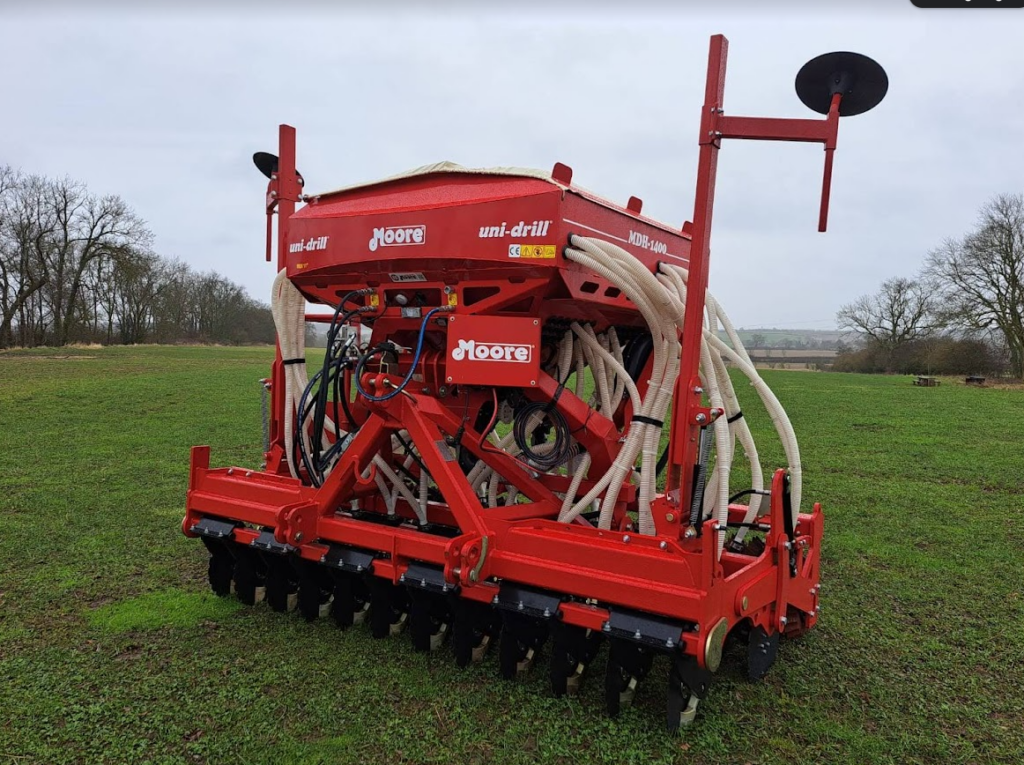
The New Grain & Fert Hopper Unidrill’s key innovation lies in its ability to seamlessly integrate fertilization with the seed drilling process. This drill can apply two different products in one pass. It can be two types of seeds or seed and fertiliser or a combination with e.g. slug pellets or only one type of seed. This dual functionality not only enhances efficiency but also brings economic benefits to the farmer. By simultaneously applying fertiliser with the seed, the machine ensures optimal nutrient distribution, leading to improved crop yields and healthier plants.
The advantages of this integrated approach to seeding and fertilising extend beyond the economic realm. The environmental impact is reduced as well, with minimized soil disturbance and lower energy consumption compared to conventional drilling methods.
One of the standout features of the Grain & Fert Hopper Unidrill is its adaptability. This versatile machine is not limited to a single type of seed or fertilizer, offering farmers the flexibility to diversify their crops without investing in multiple pieces of equipment. Whether it’s different varieties of seeds or distinct fertilizers tailored to specific soil conditions, the Grain & Fert Hopper Unidrill caters to multiple seeding tasks.
The All-New Grain & Fert Hopper Unidrill will also be eligible for the FETF grant in the UK. For more information about this popular grant, we encourage farmers to check the DEFRA website or contact Moore Unidrill directly.
The All-New Grain & Fert Hopper Unidrill stands as a beacon of progress in the agricultural machinery industry. Moore Unidrill’s 50-year journey, marked by a commitment to excellence and sustainability, has culminated in a machine that not only honours its past but also paves the way for a more efficient, adaptable, and environmentally conscious future in farming. As we salute the achievements of the past, let us also look forward to the next 50 years of innovation, growth, and success for Moore Unidrill and the farmers it continues to support.


-
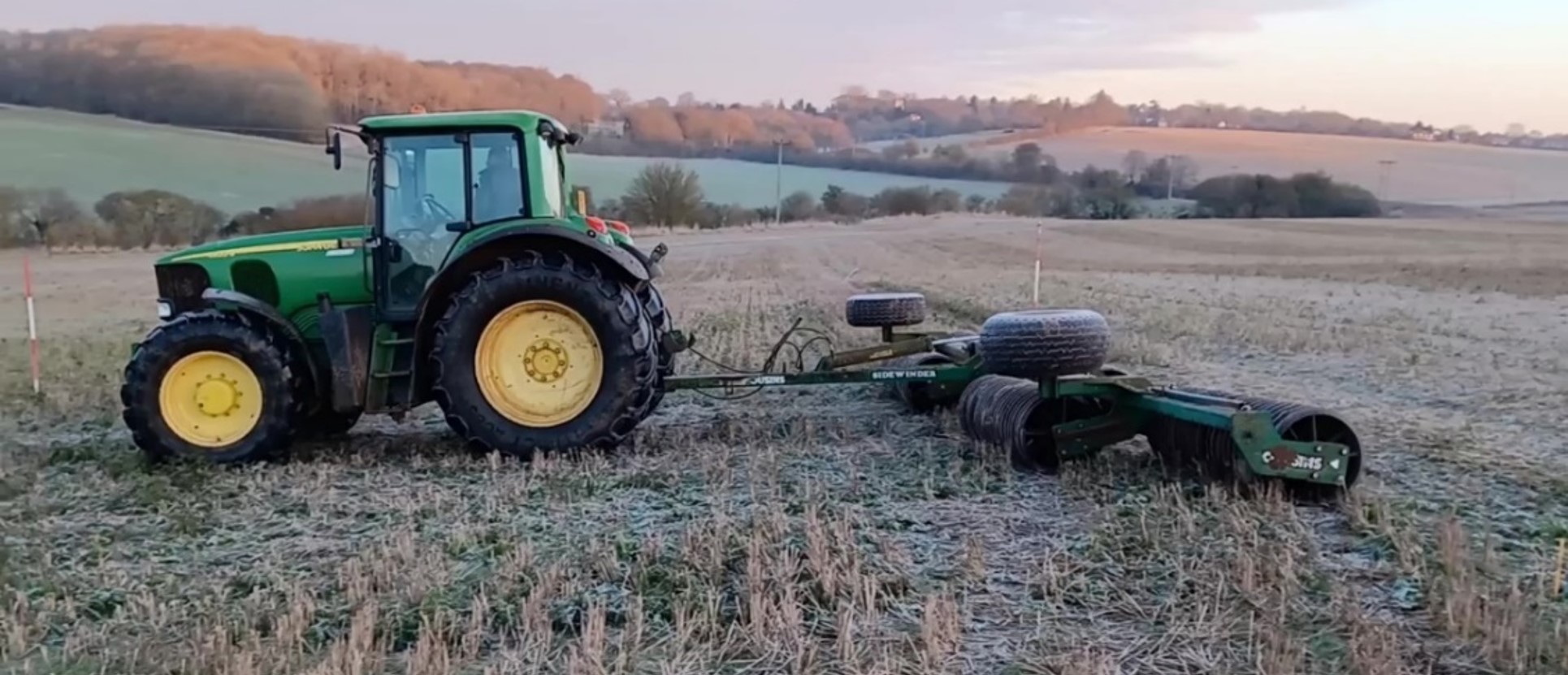
Nitrogen release from cover crops
Rachel Thorman and Anne Bhogal, ADAS
Cover crops are grown primarily to ‘protect or improve’ soils between periods of regular crop production. Whilst the benefits of cover crops for erosion control and reduced overwinter nitrate leaching losses are well established, the legacy effect for subsequent crops in the rotation is unclear. Of particular relevance is the timing of nitrogen release from cover crop residues and how this influences the nitrogen fertiliser requirement of the following cash crop and subsequent nitrate leaching losses.
The Nitrogen release from Cover Crops (NiCCs) project, funded by Affinity Water and Portsmouth Water and delivered by ADAS, evaluated the effect that cover crop species choice and different destruction methods had on nitrogen release into the following crop and beyond.
Trials were undertaken over two cropping seasons on commercial farms in Hertfordshire and West Sussex with two cover mixes and a weedy stubble control. The two cover crop mixes were:
Mix 1: Phacelia (20%) & Oil Radish (80%) @ 15 kg/ha
Mix 2: Japanese oats (45%), Buckwheat (45%) & Phacelia (10%) @ 10 kg/ha
The cover crops were then destroyed either mechanically by rolling on a frost, chopping and incorporating, or with chemicals.
The results showed that cover crops reduced nitrate leaching losses by up to 90% when compared to the weedy stubble control. Leaching losses were dependent on over winter rainfall, the amount of cover achieved and cover crop type with the cover crop mix containing the fast growing, nitrogen scavenging oil radish giving the greatest benefit in reducing leaching losses.

The reduction in nitrate leaching losses by the cover crops increased soil nitrogen supply in the spring by up to c.35 kg N/ha. If all the nitrogen in the above ground cover crop would become available to the following cash crop, a decrease in the nitrogen fertiliser requirement of the cash crop would potentially be justified. This justification was dependant on the amount of cover crop biomass and nitrogen uptake, so cannot be guaranteed in all situations.
It was evident from topsoil mineral nitrogen measurements taken following spring cover destruction, that cover crops released more nitrogen during decomposition (mineralisation) than from the weedy stubble control, reflecting the greater nitrogen uptake over winter by the cover crops.
Chemical destruction of over winter cover using glyphosate increased the amount of topsoil mineral nitrogen compared to mechanical destruction, regardless of the method used i.e. rolling on a frost or chopping. It is probable that glyphosate breaks down vegetation more rapidly allowing mineral nitrogen to become available for use by the following spring cash crop earlier than with mechanical destruction.
Mechanical destruction of over winter cover by chopping had limited effectiveness in destroying oil radish (& its below ground tap root) where it was used in a cover crop mix. The resultant oil radish regrowth required a more robust post emergence herbicide for control in the subsequent spring cash crop.
Although there were different spring cash crops grown at the 2 sites, crop yield, grain nitrogen offtake and total crop nitrogen uptake were consistently reduced where the covers had been destroyed mechanically (rolling on a frost or chopping) than by using glyphosate. Spring oat yields were reduced by 0.7 t/ha where the cover crop was destroyed by rolling on a frost, and spring barley yield was reduced by 1.0 t/ha following chopping of over winter cover.
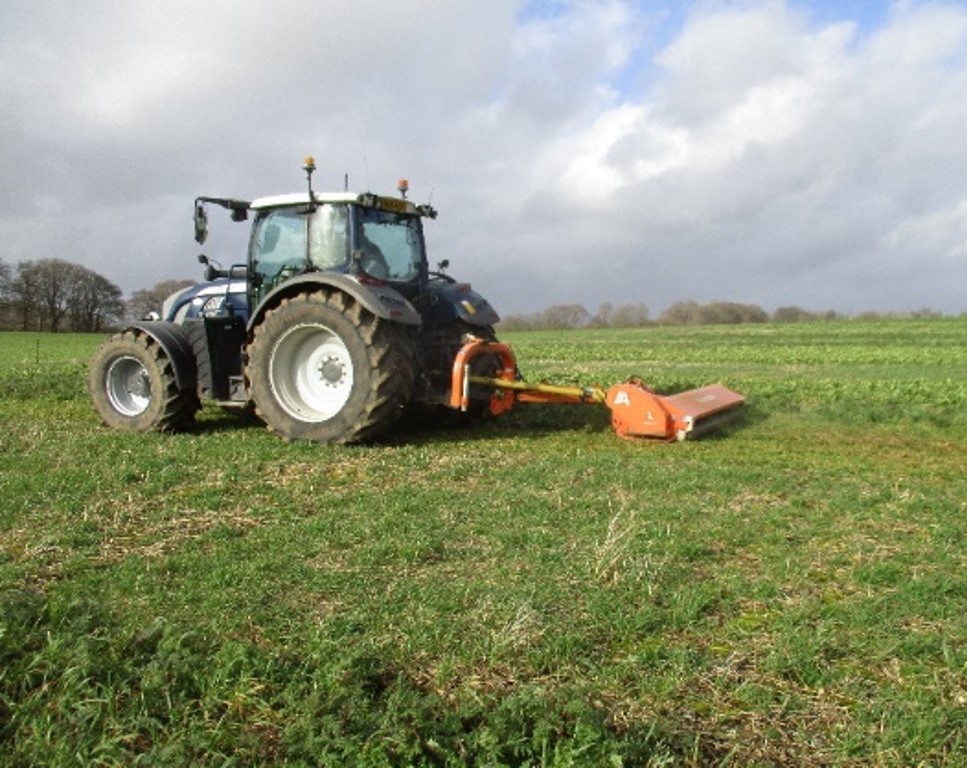
Across both sites, cover crops had a positive effect on the yield of the following spring cereal. The mean spring oat yield was 0.2 t/ha greater where cover crops had been used compared with a weedy stubble control, and cover crops resulted in an increase in the spring barley yield of 0.5-1.0 t/ha.
This study showed that it was more cost-effective to not grow a cover crop and destroy any weeds chemically, although the margins over and above growing a cover crop (with chemical destruction) were small and did not take account of any environmental incentive a farmer might receive for growing a cover crop (e.g. SFI). The study has clearly shown the importance of such incentive schemes to support cover crop use so that ‘harder to monetise’ benefits such as improved water quality, soil health and biodiversity can be realised. There is also the potential to reduce fertiliser nitrogen inputs following cover crops, although further work is required to more fully understand the level of reduction possible.


-

Getting to the Roots of Black-Grass’s Waterlogging Tolerance
Written by Rothamsted

Dr Dana MacGregor, Weed Molecular Biologist Root structures and genetics give the weed an advantage over wheat and explain field patches.
Black-grass thrives on heavy land, particularly where drainage is poor. Now a new study has shown that this problematic weed uses specific adaptations to flourish even when soil is totally saturated for up to three weeks. The data show that when waterlogged, black-grass plants grow bigger than their well-drained counterparts while wheat growth under the same conditions was significantly reduced.
The research also examined different populations of black-grass and showed that the more herbicide resistant the population was, the more waterlogging tolerant it was too.
Other studies have shown that weed competition early in crop development has the greatest impact on yield. These findings suggest fields infested with herbicide resistant black-grass are going to be badly affected by autumn waterlogging. The results also help to explain why black-grass tends to form patches in areas of the field where the soil is good at holding onto water.
“This is an important step forward in our understanding of what makes black-grass so resilient,” said Rothamsted’s Dr Dana MacGregor who led the research. “We are getting closer to pinpointing the physical and genetic mechanisms that make black-grass such a formidable foe for cereal farmers.”
For the study, seedlings of wheat and black-grass were flooded for up to 21 days in pots in the greenhouse. During this time, the size of the plant was measured and plant tissues were collected and analysed. The plants’ roots were carefully examined under the microscope to see if structural changes could be identified. Changes in gene expression and metabolism were also measured.

Black-grass has constitutive aerenchyma in the roots, whereas wheat induces root
aerenchyma in response to waterlogging. Microscopy sections showing evidence
for aerenchyma formation in wheat (cultivar Jackson a, c) and black-grass (biotype
Lola45 e, g). Scale bars represent 200 μm. Qualitative assessment for presence
or absence of aerenchyma in black-grass (f or h) and wheat root sections (b or d).
Number of sections with no aerenchyma (green), small or ill-defined aerenchyma
(blue) or clearly identifiable aerenchyma (yellow) are shown in the pie graphs.“We knew that wheat plants alter their root structure in response to waterlogging, making drinking straw-like structures called aerenchyma that increase gas exchange from the unflooded tissues down into the flooded roots. Although this survival response helps, renovating roots takes time and energy. What we were surprised to see is that blackgrass always had these structures even in the well-drained conditions. In other words, black-grass is “ready to go” when fields are flooded, whilst wheat and other crops, must remake their roots to survive,” said MacGregor.
Molecular analyses also showed that wheat changes gene expression and metabolite concentrations when waterlogged, turning on pathways that will help it to survive or using up stress-relieving metabolites. Black-grass on the other hand showed minimal responses, behaving almost as if it was oblivious to the waterlogging. Despite the small response, the transcriptomic and metabolomic profiles of these two species were different. These differences could not only help shape potential control strategies for this pernicious weed, but may also identify new physical, genetic or metabolic traits that may be helpful in future-proofing climate stressed crops.
“Black-grass is incredibly resilient and will probably do pretty well even in the face of climate change,” says MacGregor. “If we want to future-proof our crops, studying how this weed survives today’s challenges could help us to identify new or useful traits that could be used in tomorrow’s crops.”
Black-grass is one of the most problematic and damaging agricultural weeds for winter wheat in Western Europe. Severe infestations can result in yield loses of up to 70%, squeezing farm productivity and ultimately imperilling our food security. It costs UK farmers around £400 million per year and as few as 12 plants per square metre could reduce crop yield by 5%.
The full peer reviewed paper can be read here:
The mechanisms behind the contrasting responses to waterlogging in black-grass (Alopecurus myosuroides) and wheat (Triticum aestivum)
https://www.publish.csiro.au/fp/pdf/FP23193
Abstract
Black-grass (Alopecurus myosuroides) is one of the most problematic agricultural weeds of Western Europe, causing significant yield losses in winter wheat (Triticum aestivum) and other crops through competition for space and resources. Previous studies link black-grass patches to water-retaining soils, yet its specific adaptations to these conditions remain unclear. We designed pot-based waterlogging experiments to compare 13 biotypes of black-grass and six cultivars of wheat. These showed that wheat roots induced aerenchyma when waterlogged whereas aerenchyma-like structures were constitutively present in black-grass. Aerial biomass of waterlogged wheat was smaller, whereas waterlogged black-grass was similar or larger. Variability in waterlogging responses within and between these species was correlated with transcriptomic and metabolomic changes in leaves of control or waterlogged plants. In wheat, transcripts associated with regulation and utilisation of phosphate compounds were upregulated and sugars and amino acids concentrations were increased. Black-grass biotypes showed limited molecular responses to waterlogging. Some black-grass amino acids were decreased and one transcript commonly upregulated was previously identified in screens for genes underpinning metabolism-based resistance to herbicides. Our findings provide insights into the different waterlogging tolerances of these species and may help to explain the previously observed patchiness of this weed’s distribution in wheat fields.



-

Cover crops for integrated weed management
Cover crops can suppress weeds and volunteers by competing for light, water and nutrients. Some species also release chemicals that inhibit weed development.
Carefully managed cover crops can suppress weeds through various means. The effect varies depending on the cover crop and the weed species:
- They add diversity to the rotation and reduce opportunities for weeds to adapt to a cropping pattern
- Several cover crop types can out-compete weeds and help provide a cleaner seedbed
- Management practices associated with growing cover crops (e.g. mowing and grazing) can suppress weeds
- Long-term leys, with a lack of soil disturbance, can reduce viable seed numbers
- Some brassicas contain high levels of chemicals that can sterilise soil
Note: Make sure cover crops do not seed and become weeds. For example, phacelia can self-seed prolifically and become a weed.
Weed competition
Cover crops can compete with weeds for light, water, and nutrients.
- Increased competitive ability is linked to early emergence, seedling vigour, rapid growth, and canopy closure
- When establishing the following crop, ensure cover is uniform and minimise soil disturbance
- Some cover crops work by allowing weeds to become established and then destroyed before they produce viable seed. In this situation, cover crop canopies need to be open enough for weed germination
A note on black-grass
Cover crops only have a small impact on black-grass. Agronomic factors, such as cultivation timing and type, use and timing of glyphosate, date of crop establishment and diversity of rotation, have a bigger effect on black-grass populations. A change in the timing of crop establishment has the greatest impact.
Allelopathy
Allelopathy is where chemicals produced by one plant (or plant-associated microorganisms) affect the growth and development of another plant. The release of allelochemicals can be affected by plant age and vigour, environmental factors and the presence of other plants.
The impact of these chemicals is affected by soil texture, organic matter, temperature, light and microbial breakdown. Some plant species secrete chemicals into the soil (both during their life and after incorporation) that inhibit weed seed germination. Sometimes, these can also inhibit germination in subsequent crops, especially directly sown (i.e. not transplanted) small-seeded crops; the effect can last for several weeks.
Cover crops reported to have in-field allelopathic effects include rye, oats, barley, wheat, triticale, brassicas (oilseed rape, mustard species, radishes), buckwheat, clovers, sorghum, hairy vetch, sunflowers and fescues. However, it is not easy to separate physical competition and allelopathic effects.
Cover crops for integrated pest management
Cover crops can disrupt pest life cycles and reduce their populations. Brassicas are also used as a biofumigant to manage some soilborne pests. Certain crop species can also be used as trap crops and to encourage beneficial organisms.
Cover crops contribute to integrated pest management (IPM) through a variety of mechanisms.
Biofumigation
When certain cover crop material is chopped up and incorporated into the ground, it releases toxic compounds that help sterilise the soil. For example, brassica cover crops release glucosinolates – and products of their degradation, such as isothiocyanates – as well as volatile sulphur compounds that are toxic to many soilborne pests. Biofumigant cover crops have been demonstrated to be useful for managing beet cyst nematodes and rhizoctonia root rot in sugar beet and potato cyst nematodes in potatoes.
How cover crops are produced, destroyed and incorporated will affect the efficacy of biofumigation.
Biofumigation for PCN management
Trap crops and host disruption
Some cover crops can act as a trap crop by promoting pest egg hatch, including some nematode species.
Cabbage root fly and other brassica pests can be disrupted by diverse planting, for example, with intercropped cover crops (understory or strips). However, the approach requires experimentation in each system.
Predator habitat
Cover crops provide habitats for general predators, which is especially important over the winter.
Summer-flowering plants also encourage beneficial predators such as hoverflies, lacewings and parasitic wasps.
Do cover crops encourage pests?
Cover crops can encourage some pest species, but they can also help control pests in grass leys. However, long grass-clover leys can harbour soilborne pests, such as leatherjackets and frit flies, which can reduce dry matter production significantly and even destroy a grass ley reseed.
Good management can reduce the impact of soil pests:
- Autumn ploughing and disking can reduce wireworm numbers
- Close mowing between July and September reduces egg-laying by crane flies (the adults of leatherjackets)
- A quick mustard crop (high-glucosinolate variety) can be effective at reducing soilborne pests through biofumigation, providing it achieves a large biomass with rapid incorporation into sufficiently damp soil
Some cover crop scenarios can increase slug populations. However, ryegrass or lucerne are unlikely to cause problems. Some cover crop species host soilborne pests, providing a ‘green bridge’ between main crops. Ploughing in leafy crop residues may also support egg laying by bean seed flies.


-

Bayer and Trinity Agtech join forces to drive regenerative practices in agriculture
Bayer’s European Carbon Initiative enables farmers, food processors and retailers to achieve carbon commitments and implement regenerative agriculture practices. By 2025, Bayer expects to significantly increase the number of food and ag value chain projects and the number of participating farmers / Trinity Agtech’s Sandy platform delivers a trusted and distinctive natural capital navigation capability for carbon and sustainability impact management and supports farmers in managing their environmental sustainability, their profitability and their business resilience – all aligned with the latest Intergovernmental Panel on Climate Change (IPCC) methodology and compliant with international reporting and accounting standards
Bayer’s European Carbon Initiative enables farmers, food processors and retailers to achieve carbon commitments and implement regenerative agriculture practices.
Bayer today announced a partnership with UK-headquartered company Trinity Agtech. As part of Bayer’s efforts to drive regenerative agriculture, Trinity Agtech’s platform Sandy will be instrumental for Bayer’s Carbon Initiative in the region EMEA in measuring and monitoring carbon on a farm level. Furthermore, the cooperation will enable the customized development of Bayer’s solutions to value chain players needs and growers based on Trinity’s capabilities. Leveraging science, digital and agronomical strengths on both ends the result is a unique regenerative agriculture ecosystem, developing high quality assets for a market that needs to be committed to tangible and credible outcomes.
The European Carbon Initiative is vital to Bayer’s overall strategy to shape regenerative agriculture. This includes making agriculture more productive and resilient while restoring natural resources. Started off in 2021, the Carbon Initiative now includes multiple tailored projects with large companies from the food supply and agricultural value chain. Today, farmers across several European countries and companies across the Food and Farming supply chain are working alongside with these partners to reduce carbon emissions and sequester carbon in the soil. Project results show that growers that are using regenerative practices are emitting on average 15 percent less carbon than conventional farmers. By 2025, Bayer expects to significantly increase the number of food and ag value chain projects and the number of farmers participating in value chain programs as the European Carbon Initiative is going to switch from pilot phase to scale-up phase for commercial projects.
To support these goals, reliable monitoring, reporting and verification (MRV) is key for all players of the food value chain to be compliant with third parties, global guidelines, certification bodies and regulatory requirements. With Sandy, Trinity Agtech has developed a new generation, trusted and easy-to-use cloud-based platform where farmers and project developers will bring all their data into one place to create a fact-based and primary data driven register of a farm’s natural capital. This allows the farmer to assess the farm’s carbon balance and options going forward.
“Our collaboration with Trinity offers many benefits for farmers and for our partners in the food value chain that want to deliver against their carbon reduction commitments and want to support regenerative practices in agriculture,” said Lionnel Alexandre, Carbon Business Venture Lead for Europe, Middle East and Africa at Bayer’s Crop Science Division. “We need reliable measuring technology and data analysis to verify carbon reductions and carbon sequestration on the farms. Trinity contributes with its state-of-the-art platform that is acknowledged by many experts around the globe.”
Working with internationally approved models to ensure accuracy
Trinity’s models and analytical frameworks are nationally and internationally compliant with the IPCC standards and other key global guidelines, such as the GHG-P, in addition to previous verification against ISO 14.064 and 14.067 methodologies. Trinity Agtech’s distinctive scientific board contains leading international experts to ensure the most accurate possible assessment for the farmer with the available data. A recent study commissioned by the UK Department for Environment, Food & Rural Affairs (DEFRA) across 81 carbon calculators has placed Trinity’s software Sandy on the first rank in assessing farm carbon footprints and natural capital.
“We’re proud of Bayer’s commitment to credible and trusted sustainability analytics and their power in advancing the prosperity and environmental progress of the Food and Farming supply chain. Trinity is delighted to be Bayer’s analytical partner of choice in this vital program,” said Dr Hosein Khajeh-Hosseiny, Founder and Executive Chairman at Trinity.
All digital and cloud-based solutions from Bayer and its partners meet or exceed global data privacy requirements and provide data storage in the world’s most trusted cloud environments with leading security offerings. Most importantly, farmers own and control their farm data. They decide on what they share and what data they make available.


-

Disc Blades From the Foundry to the Farm.
Since 1881 Forges De Niaux from France have been making and supplying quality Disc Blades to OEM’s and Farmers. The first traces of activity on their french industrial site date back to the 19th century. With abundant wood, water and iron, the Vicdessos valley was an ideal location for forging activities. The production process used at this time was the so-called “forge à la catalane”. By 1945 and the end of the second World War the Marshall Plan brought American farming techniques to Europe. As disk ploughs were being introduced in Europe, Forges de Niaux started to specialise in disk blade manufacturing. In 1985 the Niaux 160 quality was introduced. The use of boron steel allowed Forges De Niaux to bring the hardness level to 160 kg/mm². The Niaux 160 boosted the international development of Forges de Niaux. Then in 2009 there was the launch on the Niaux 200 quality, a landmark year for Forges de Niaux making them the leading global disk blade manufacture. The patented Niaux technology fixed a new quality standard with an evolutive hardness of up to 200kg/mm². The Niaux 200 disk blades became the disk blades with the best lifespan on the market and still are.

Today’s Technological transformation over recent years has transformed the company: Robotisation of processes, continued R and D and the creation of a modern and integrated information system have all led to Forge De Niaux being the global leader in the manufacture of Disc Blades.
The Forge De Niaux philosophy has always been to create value by improving theperformances of wear parts and this is now available to UK farmers through their relationship with Bourgault Tillage Tools and BTT UK.

Niaux 200 disk blades provide high quality work over a longer duration than other disks on the market giving farmers the all-important lower cost per acre figure.
The research and development efforts implemented at Forges De Niaux on metallurgy and heat treatment have allowed for unsurpassed hardness (up to 58 HRC) on the discs outer edge for a longer lifespan, and a more flexible disc centre (40 – 50 HRC) to allow for any shocks and possible cracking around the bolt holes.

This combined with the Niaux 200 disc blade auto sharpening technology means that the quality if the cut will help deal with all crop residues and the more the disc wears the sharper the blade. Time, effort and cost in changing a set of disc blades is significant so you want to make sure that any replacement discs offer the right return on the investment. There is the old saying ‘By cheap, Buy Twice, Change Twice.

Contact Bourgault Tillage Tools (BTT) to discuss the available full range
Call 01733 971971 Or email help@bttuk.com Or buy at Farm Market Place.



-
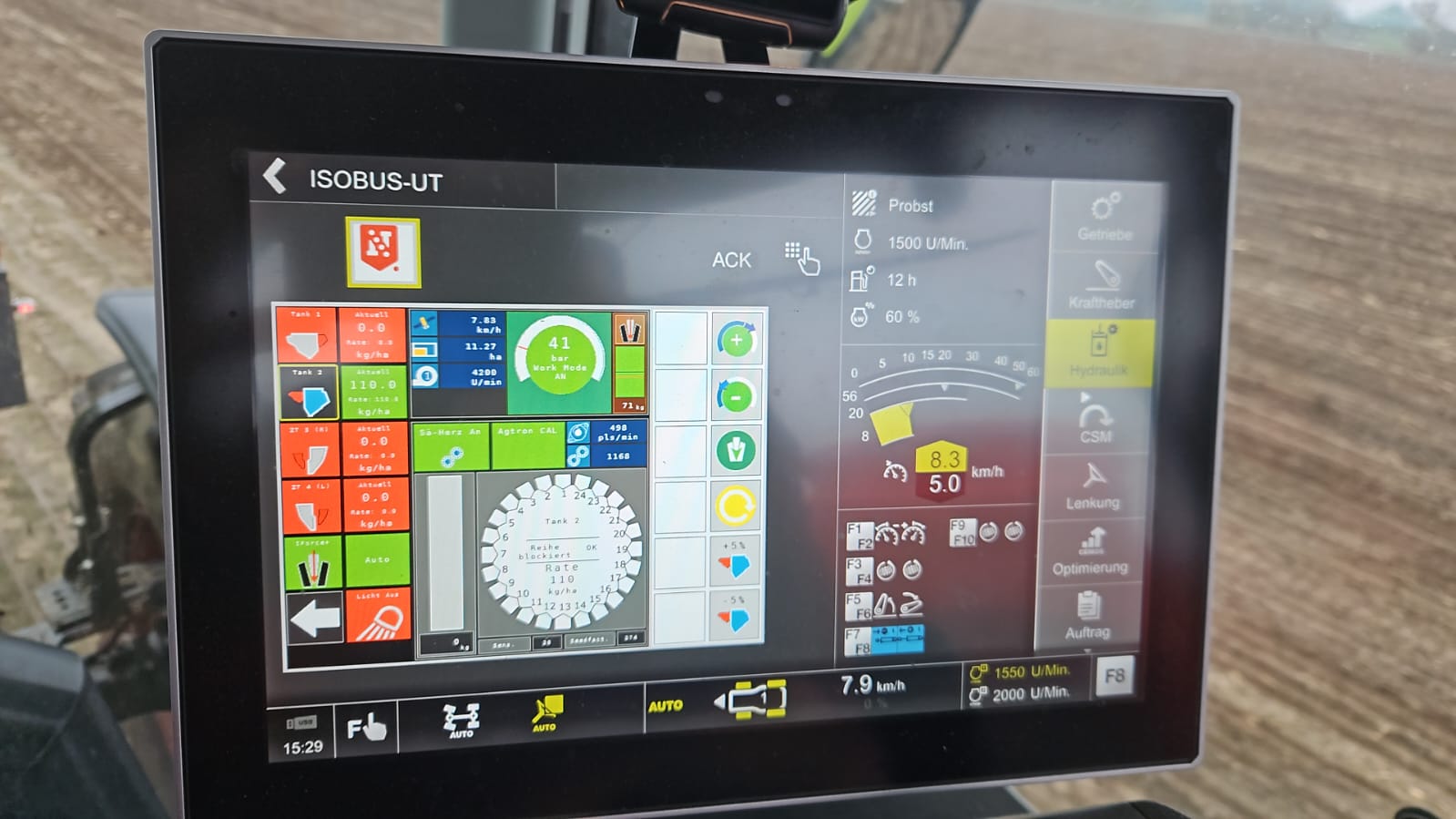
New Isobus control operation system for Novag no-till drills: efficient and powerful configurations
Written by Novag SAS. See Novag in the Drill Arena at Direct Driller at Cereals 11th & 12th June, Bygrave Woods, Newnham Farm, Herts
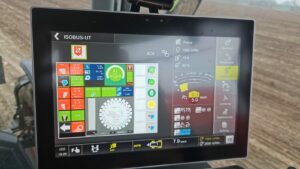
Novag manufactures each machine to order and allows individual configurations.
We are pleased to announce the launch of our new Isobus control system for our no-till drills. This development enables our customers to control their machines not only with our dedicated terminal but also with standard Isobus-enabled devices or the Isobus-enabled monitors of their tractors. This flexibility makes operating and integrating our machines much easier, regardless of their model.
“The introduction of the Isobus control system is part of our commitment to always offering our customers innovative solutions to adapt Novag seeding technology to their needs. They optimise their operations and increase their yield potential. We are proud to be at the forefront of the development of no-till technology and look forward to supporting our customers in this endeavour,” says Ramzi Frikha, Novag’s founder and chief engineer.
The IntelliForcePlus automatic coulter pressure control system powers all Novag models. This system hydraulically regulates the contact pressure on the coulters from 100 to 500kg.
For simultaneous metering of seed and fertiliser, all Novag no-till drills come with a two-part primary hopper. On every Novag T-ForcePlus, two additional tanks are available as an option, such as slug pellets, fine seeds, or particular micronutrients. They either deliver into the airflow of the main tanks or distribute over a wide area in front of or behind the machine. The unique software controls all four tanks, each with a hydraulic metering unit, capacitive sensors, and individual calibration.
The sowing T-SlotPlus coulters are prepared ex-factory for liquid applications (fertiliser, compost extract, enzymes, etc.).
All Novag direct seed drills are now Isobus-prepared at the customer’s request, so machine functions such as application maps for site-specific sowing can be conveniently controlled via the tractor terminal, joysticks, or Isobus VT. The Novag control systems can handle up to four product prescriptions and maps for the IntelliForcePlus closing wheel settings.
For all customers who already own a seed drill, Novag offers the option of converting the machine to Isobus control with a retrofit kit. This allows the farmer to continue to fulfil all the requirements of modern agriculture with his familiar, reliable machine.



